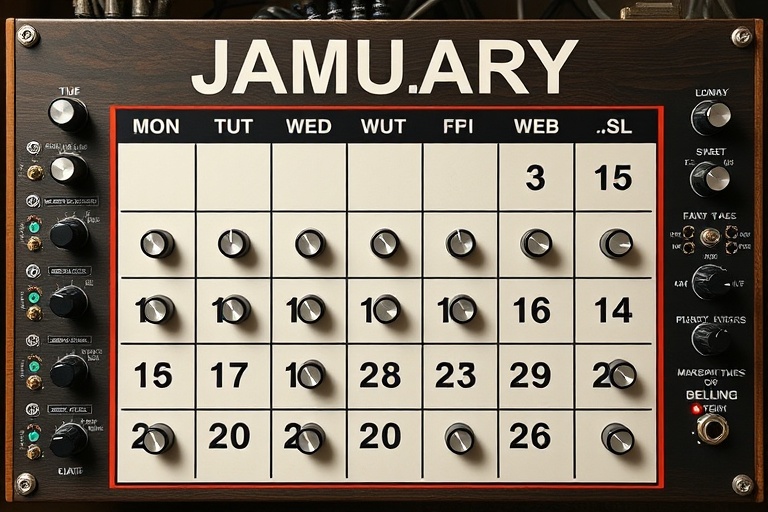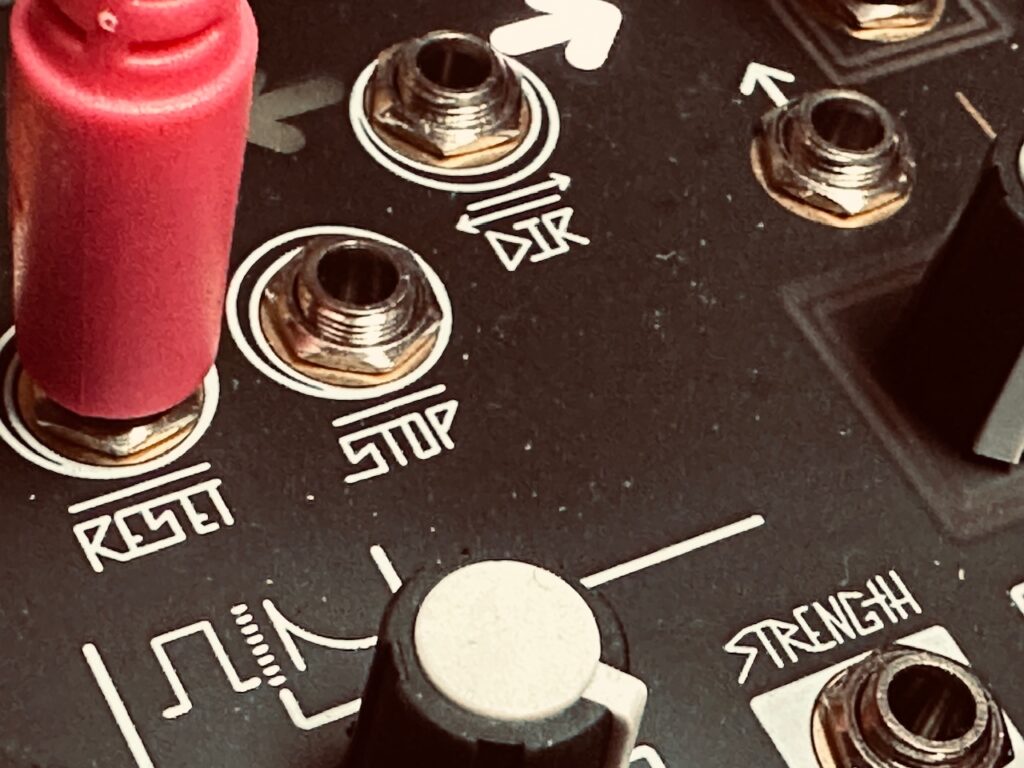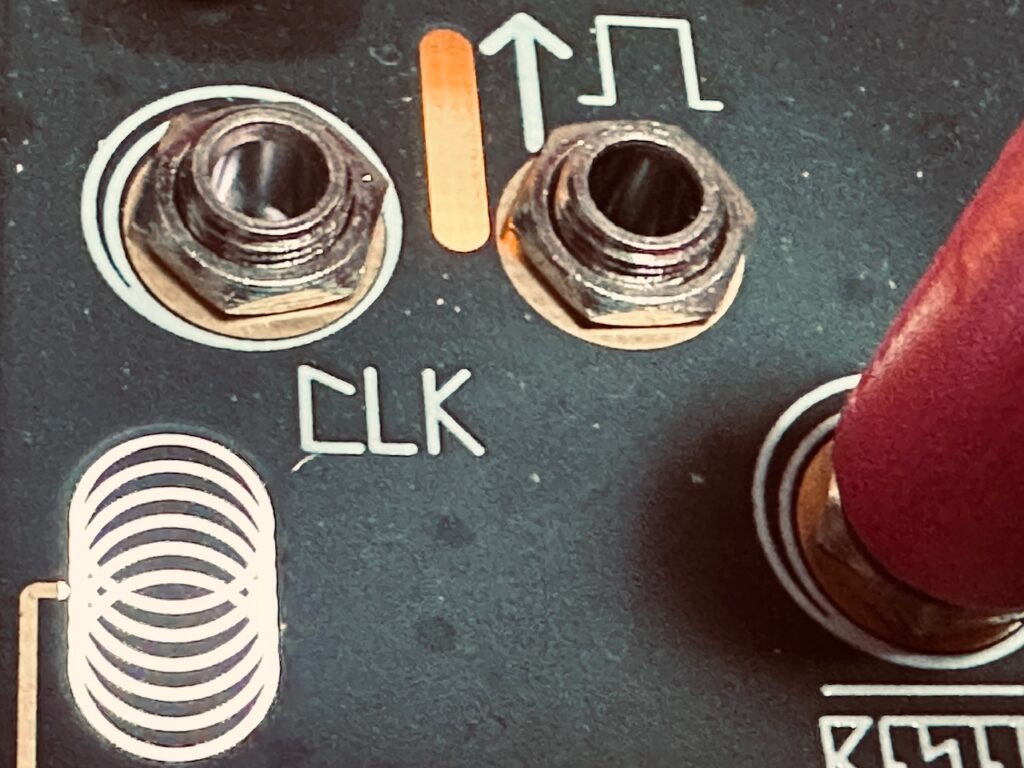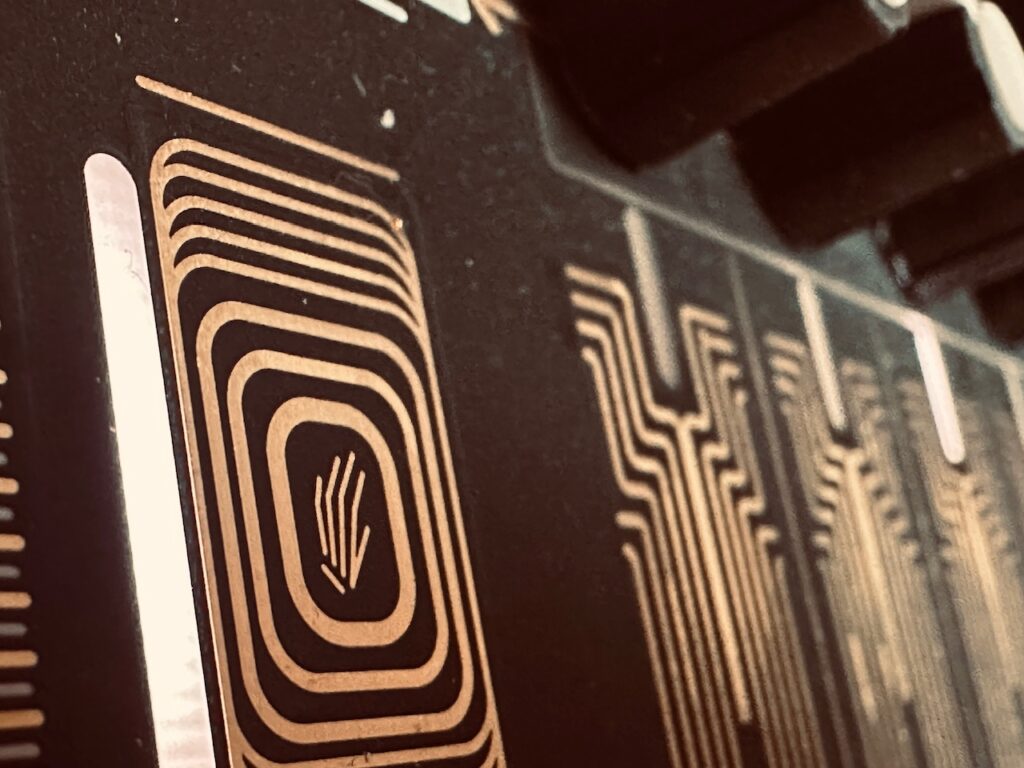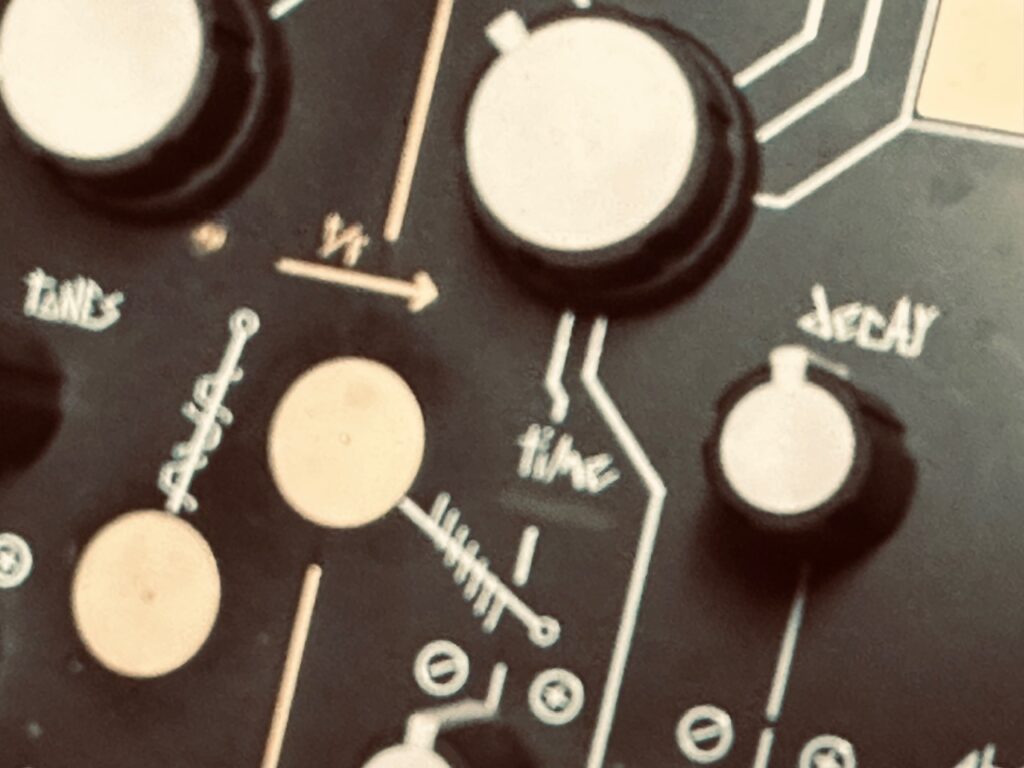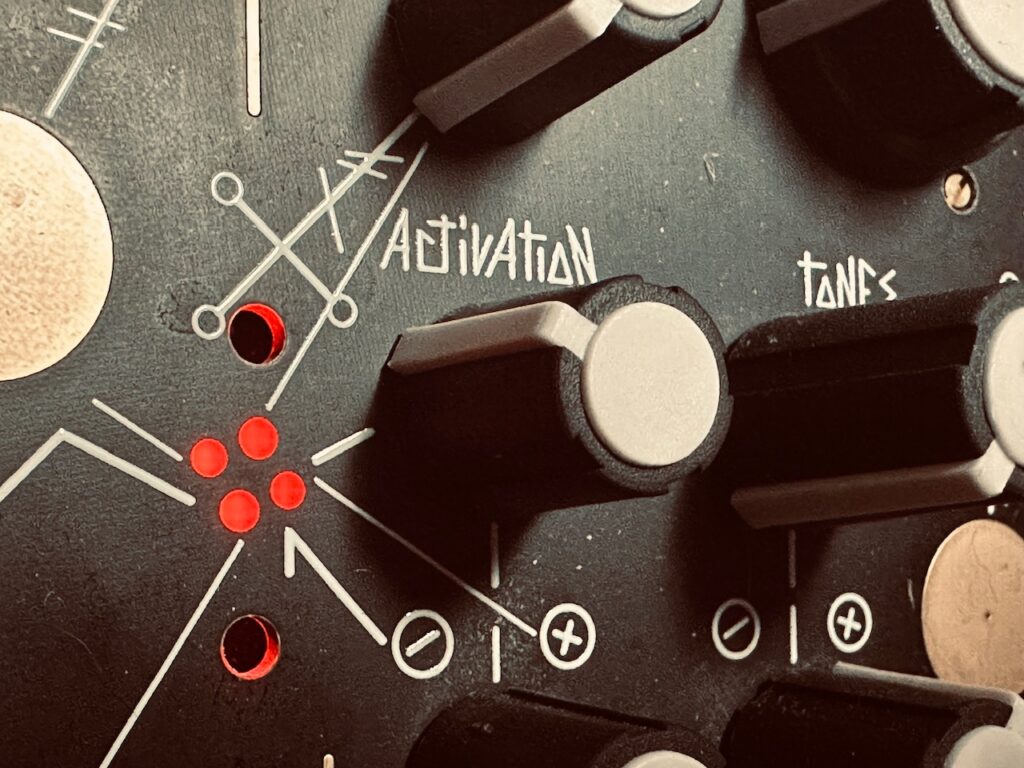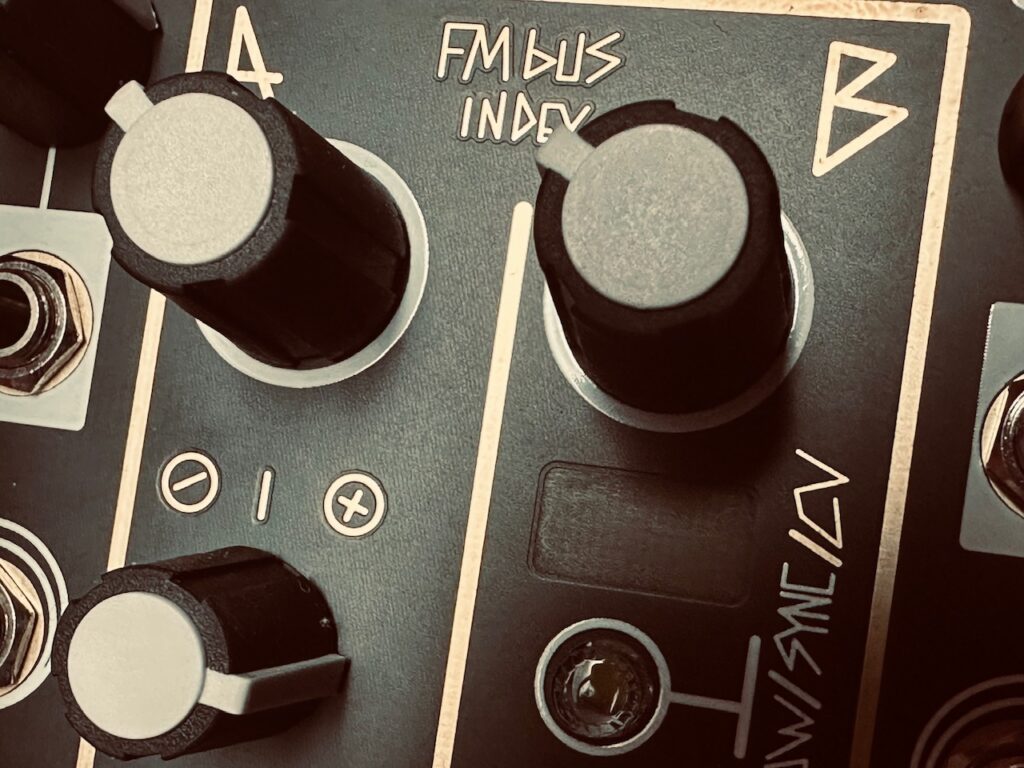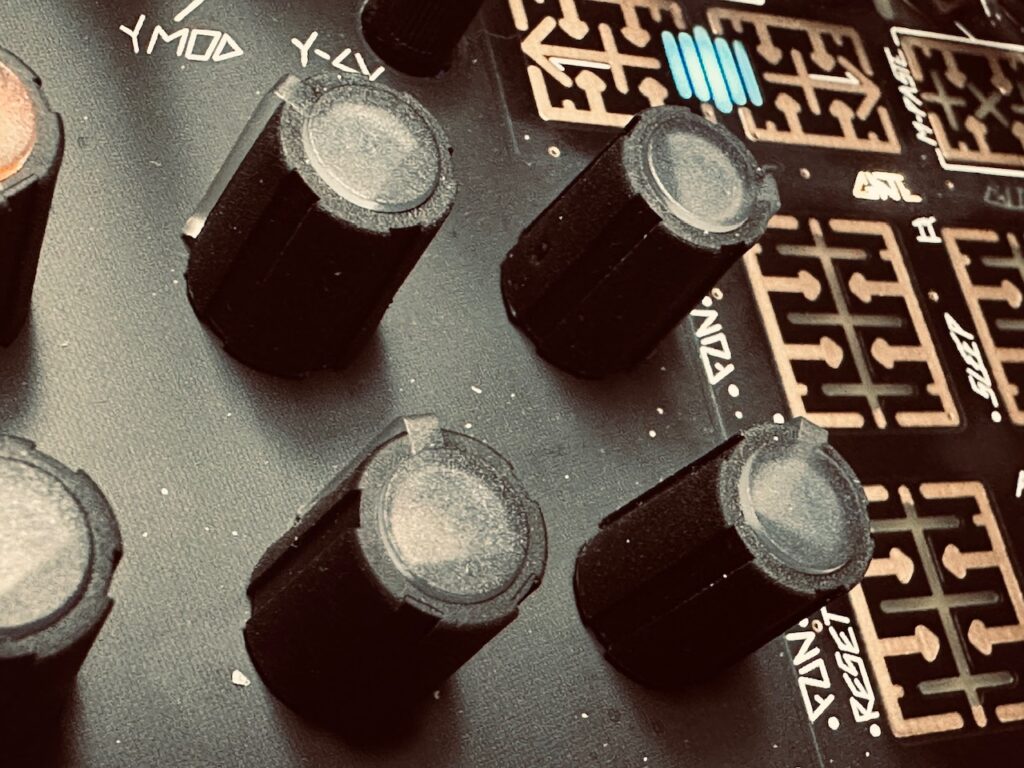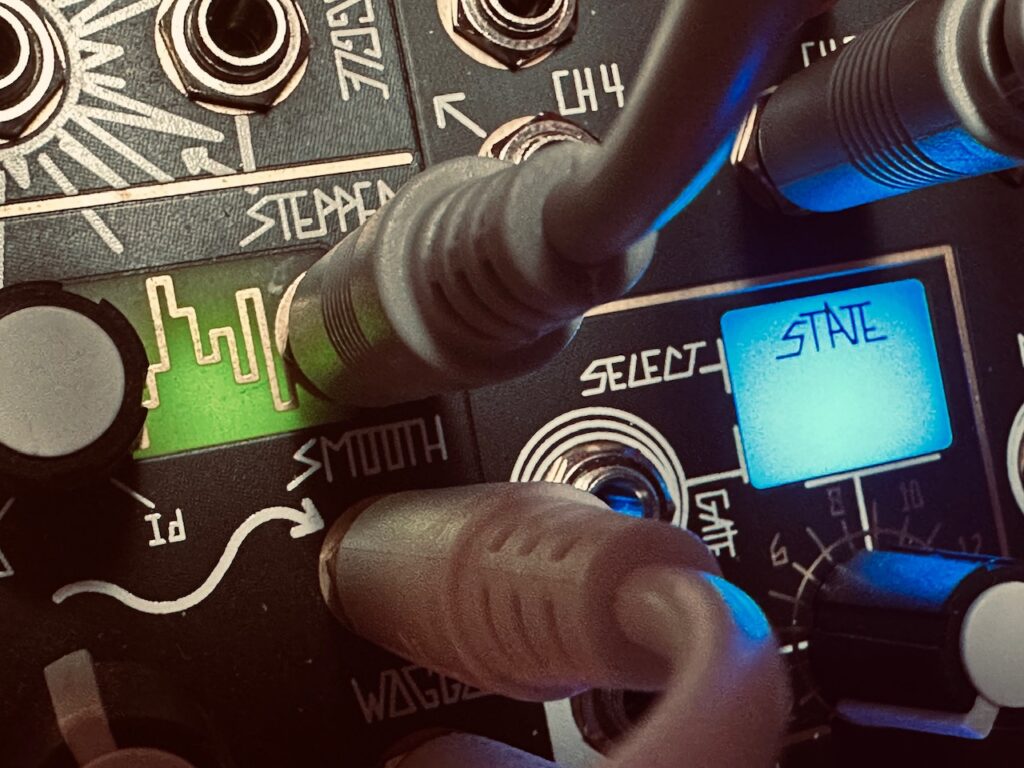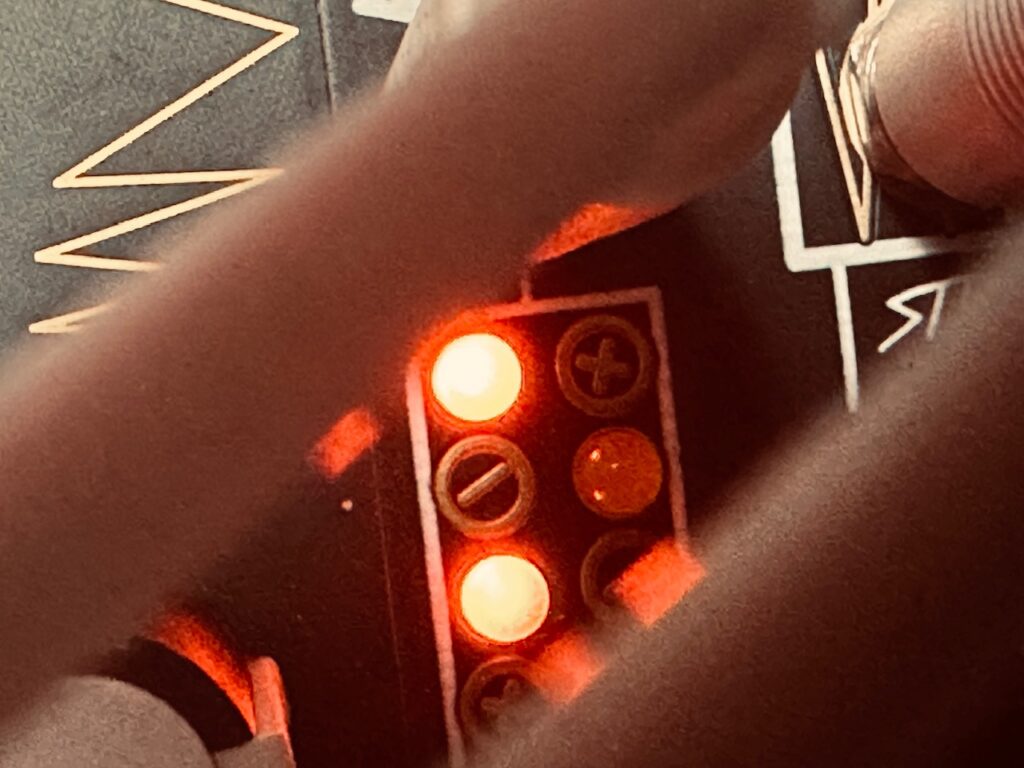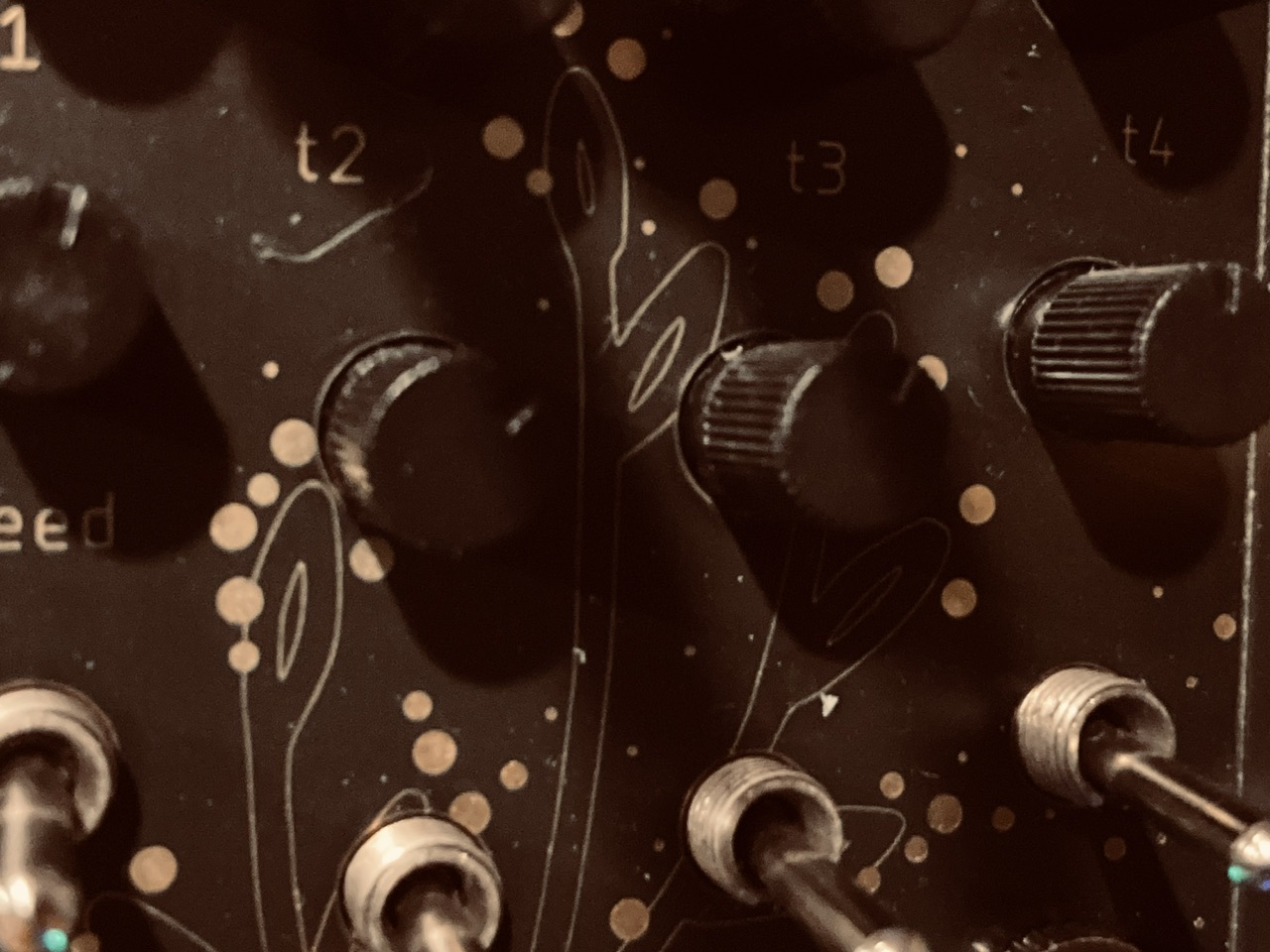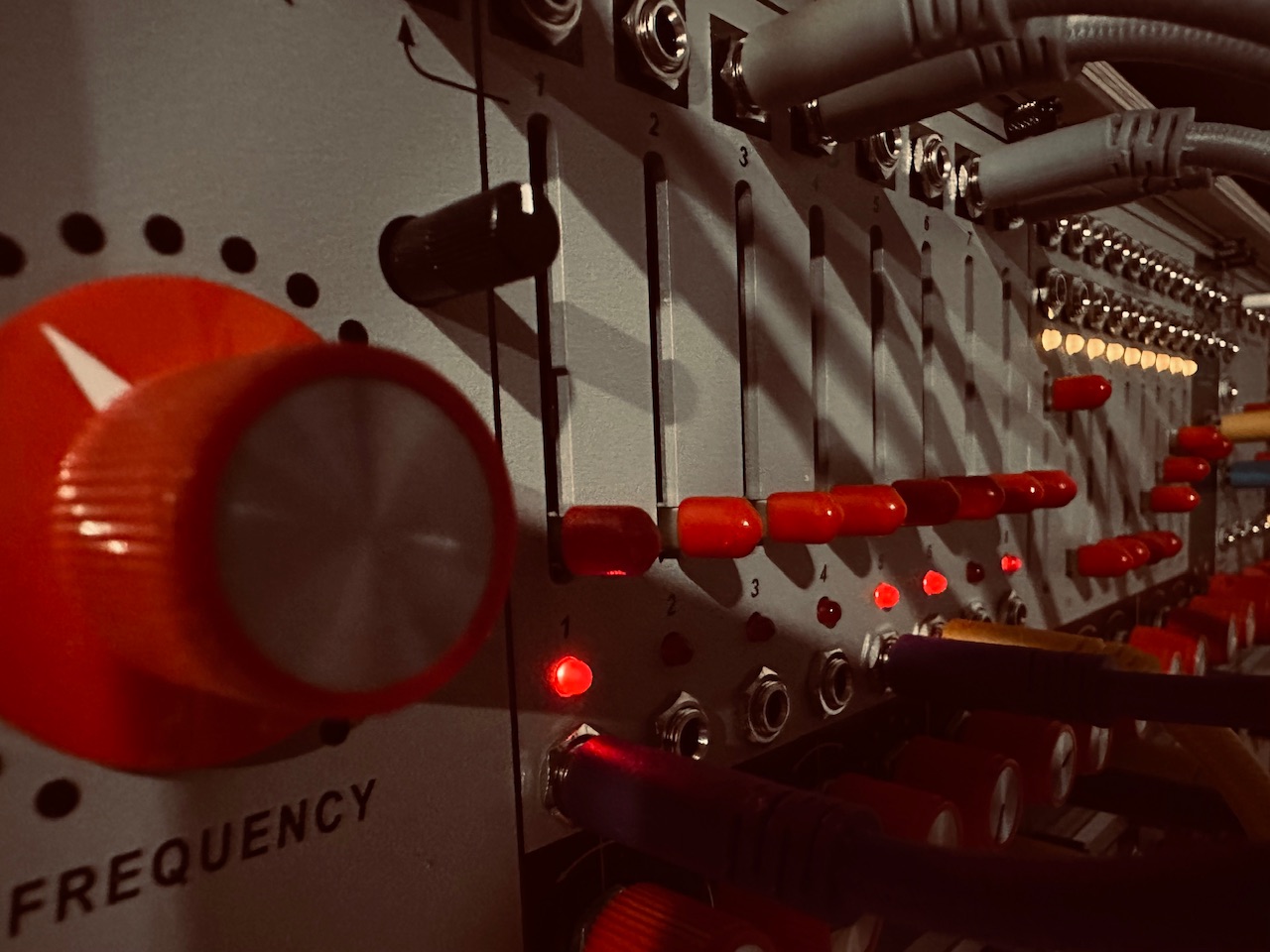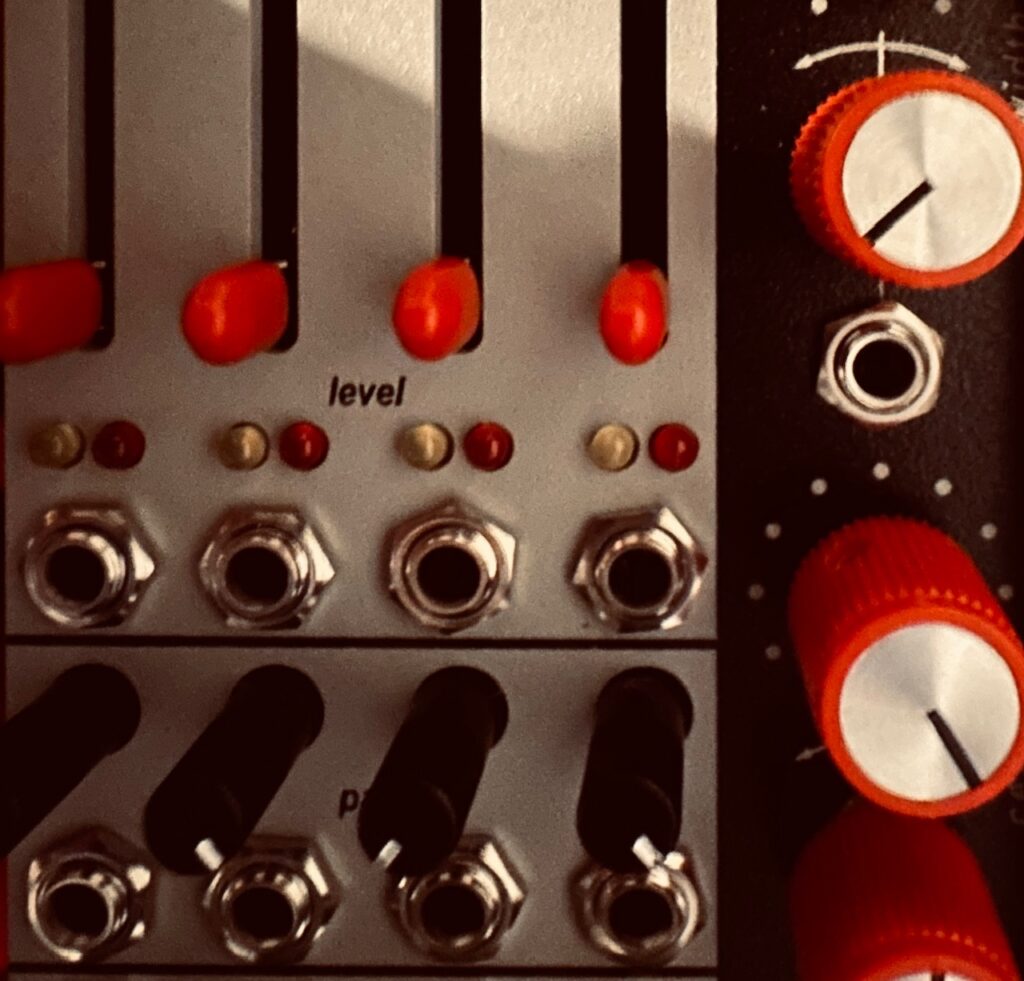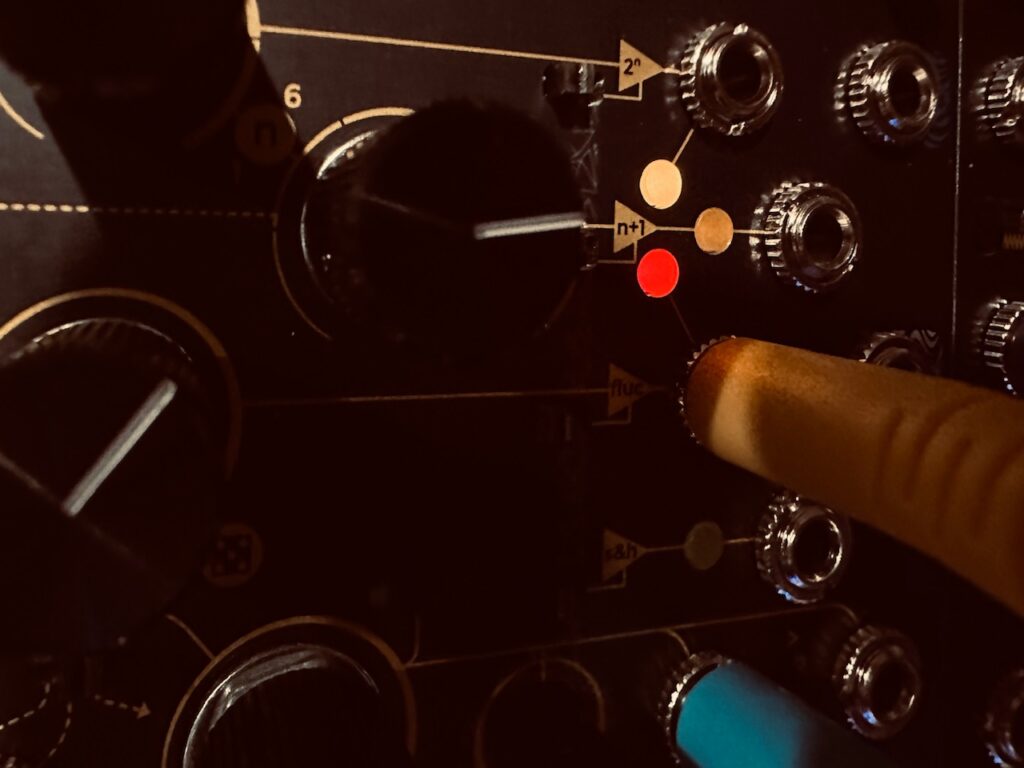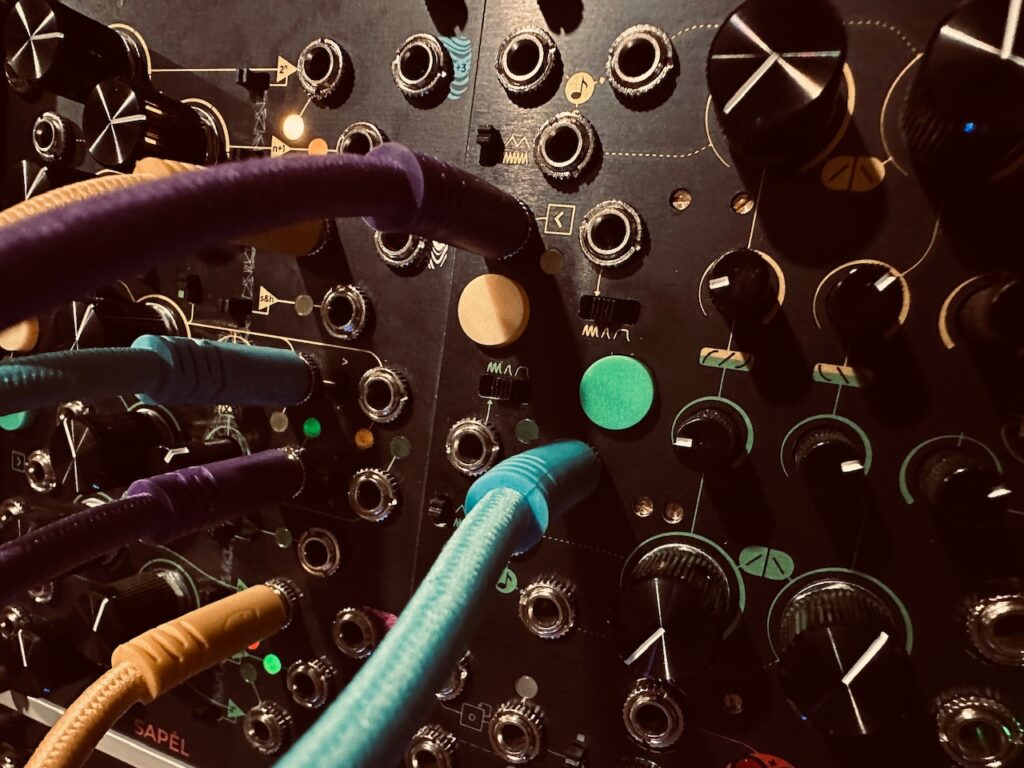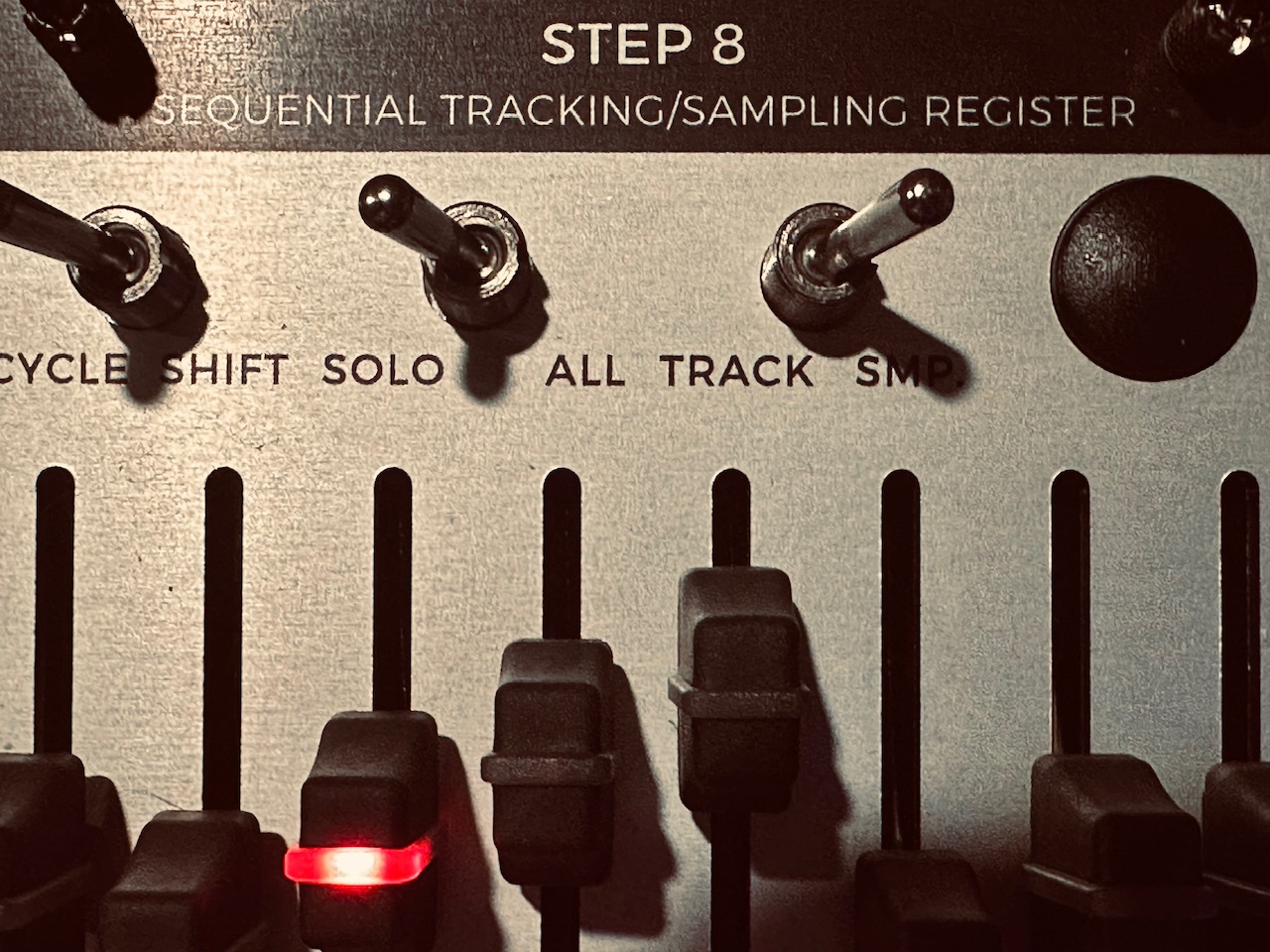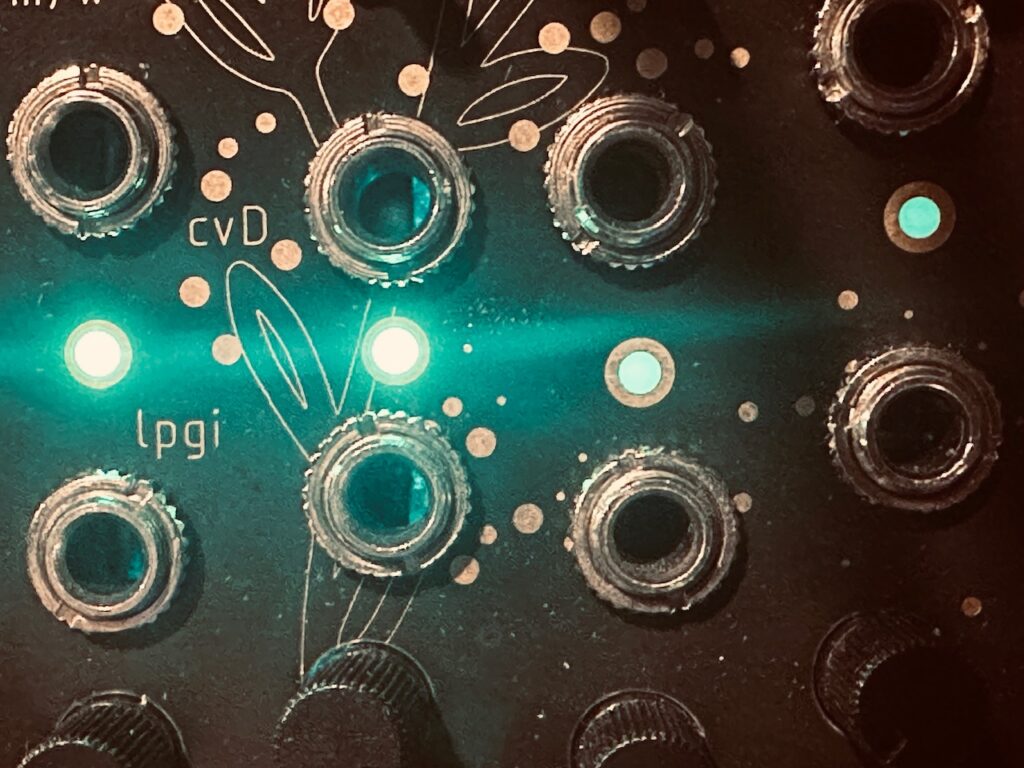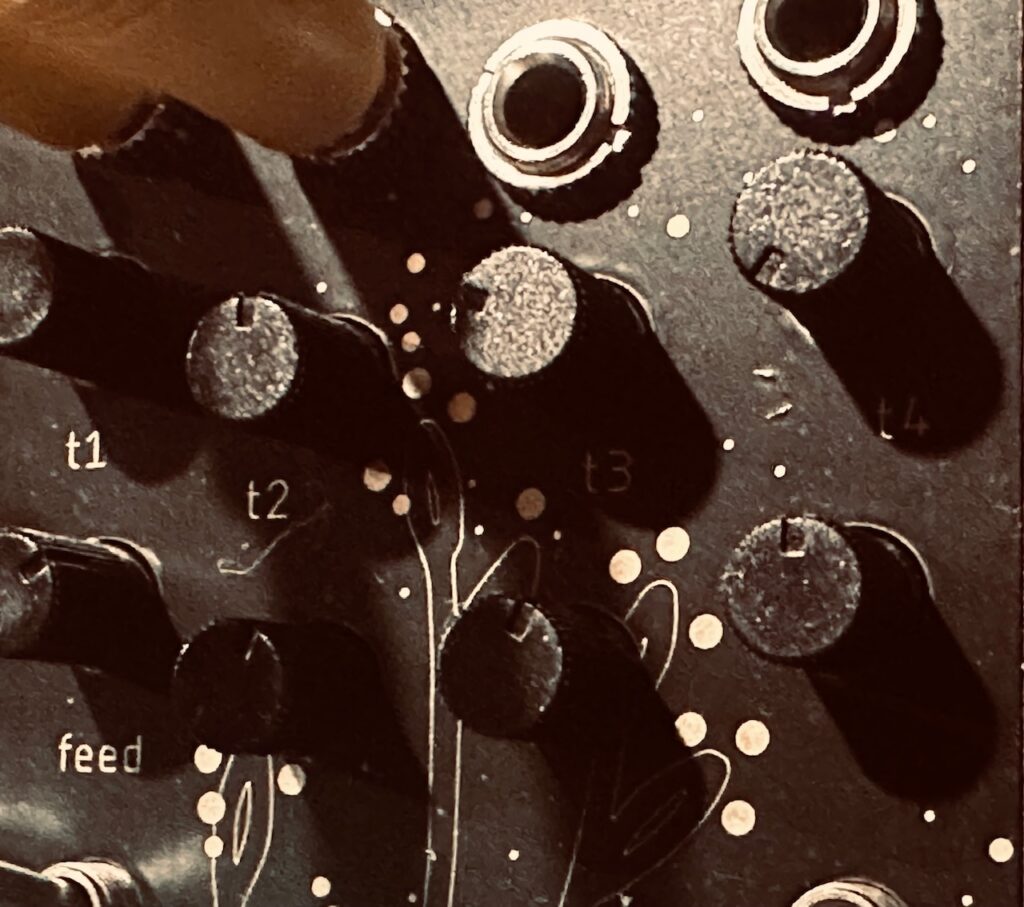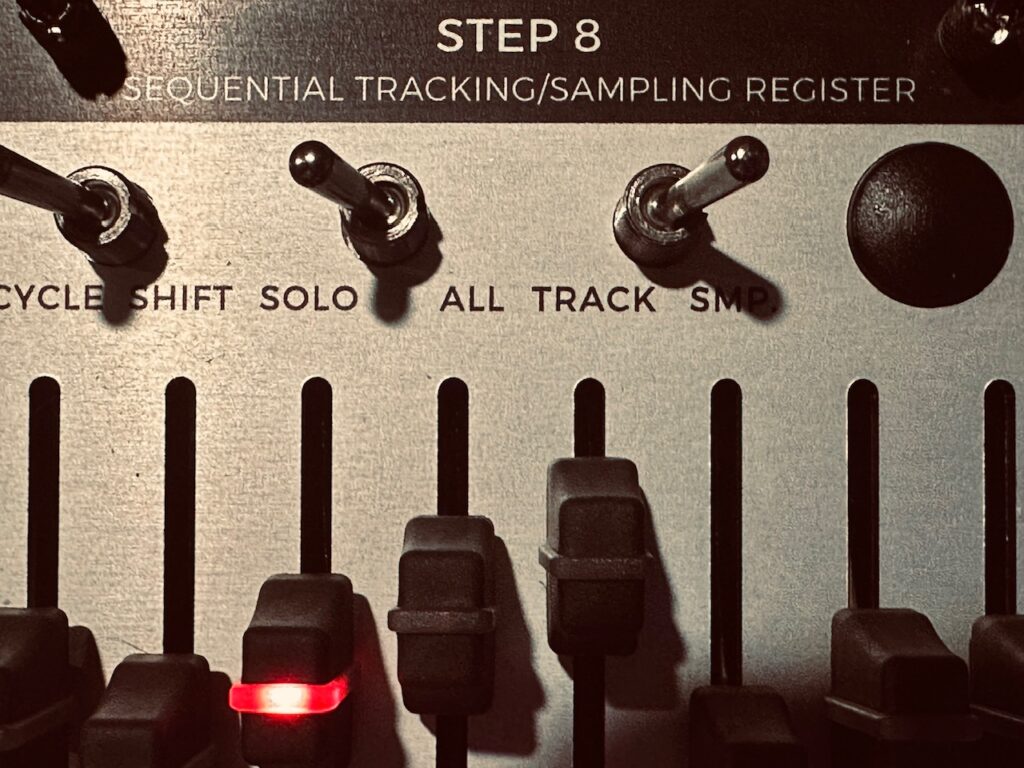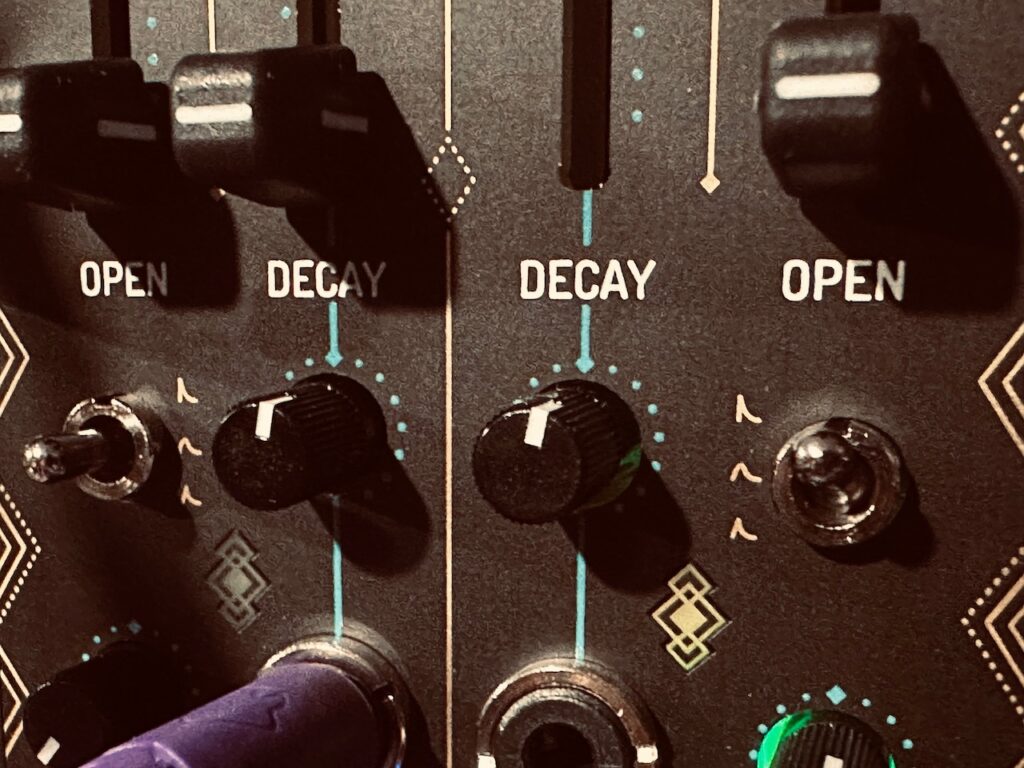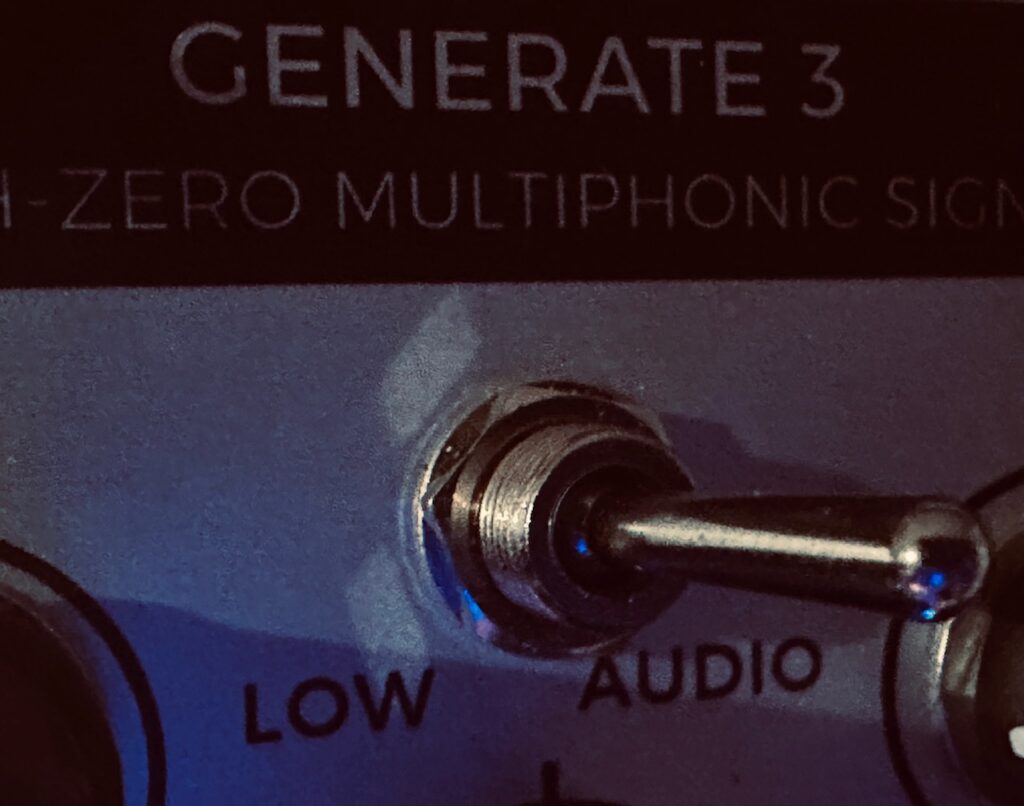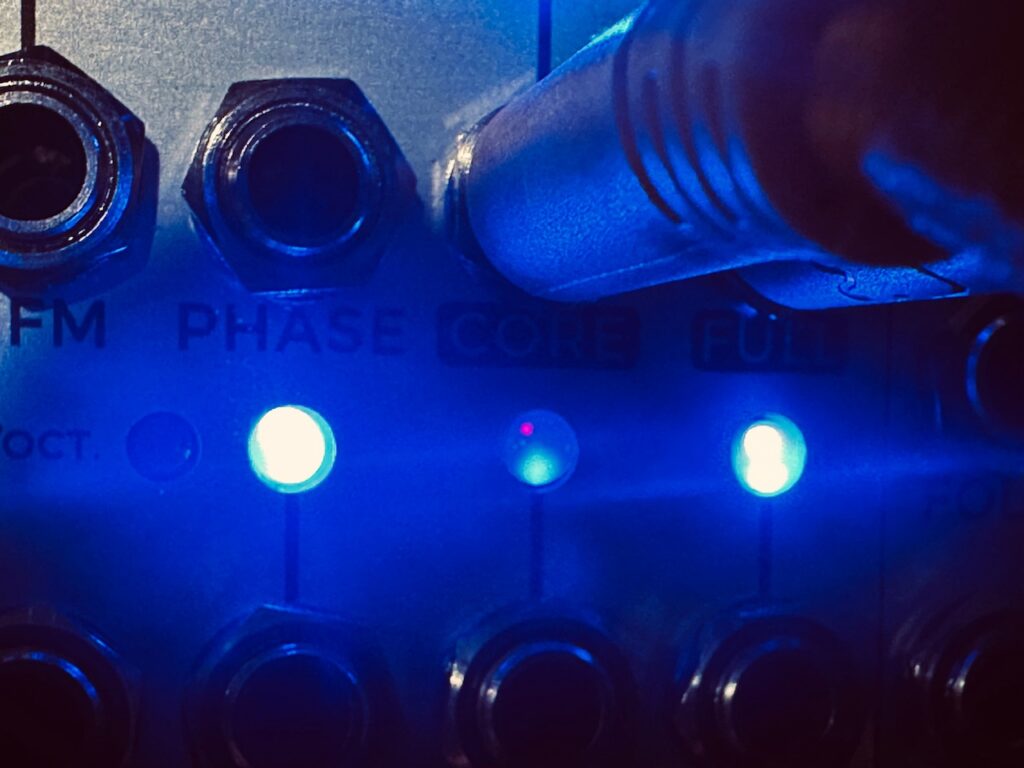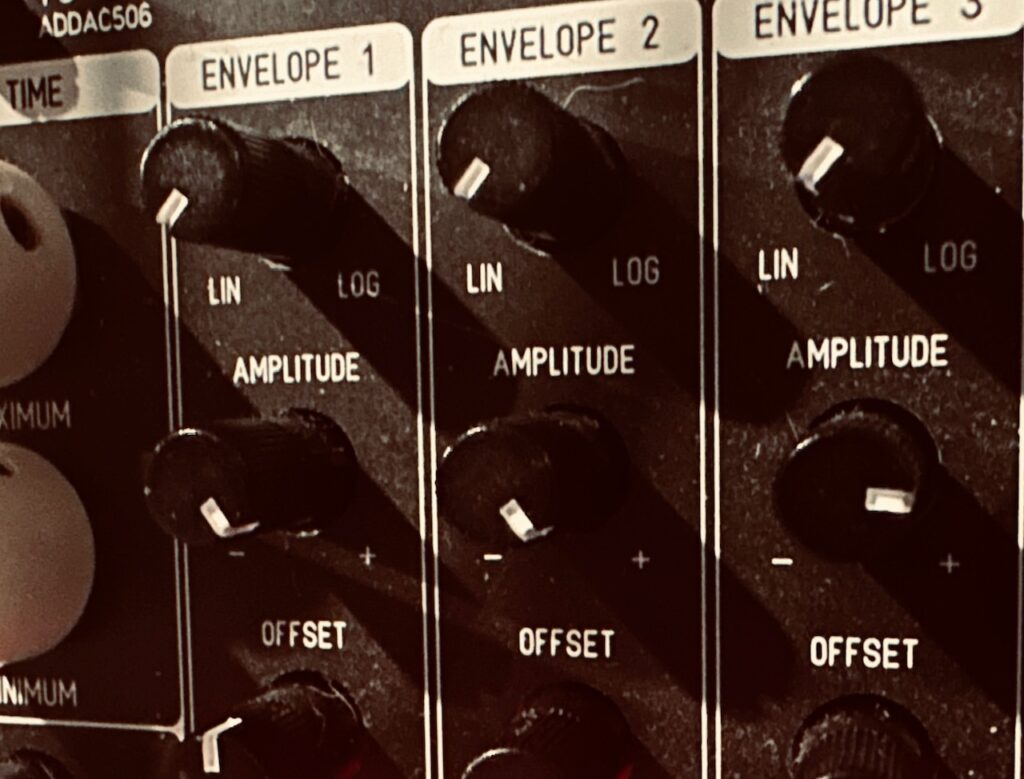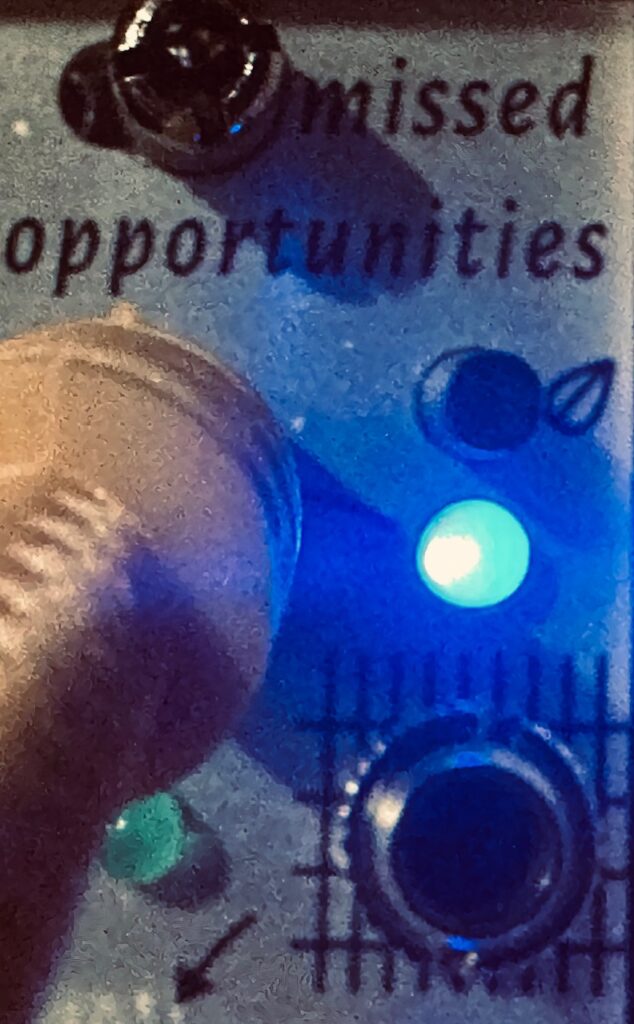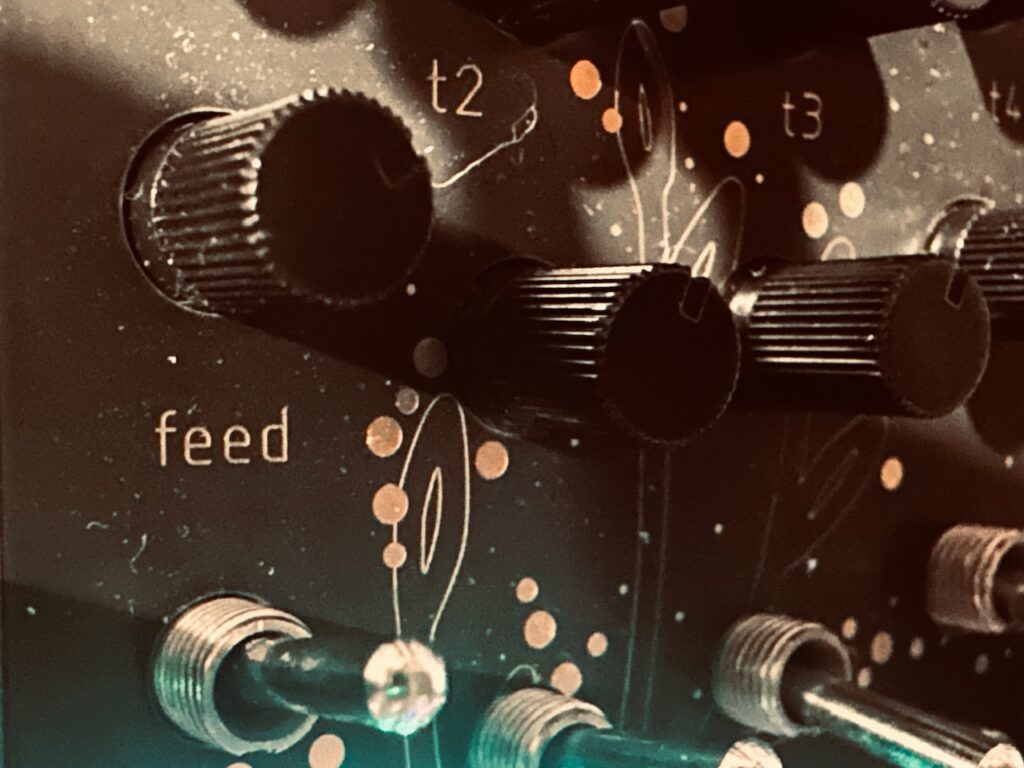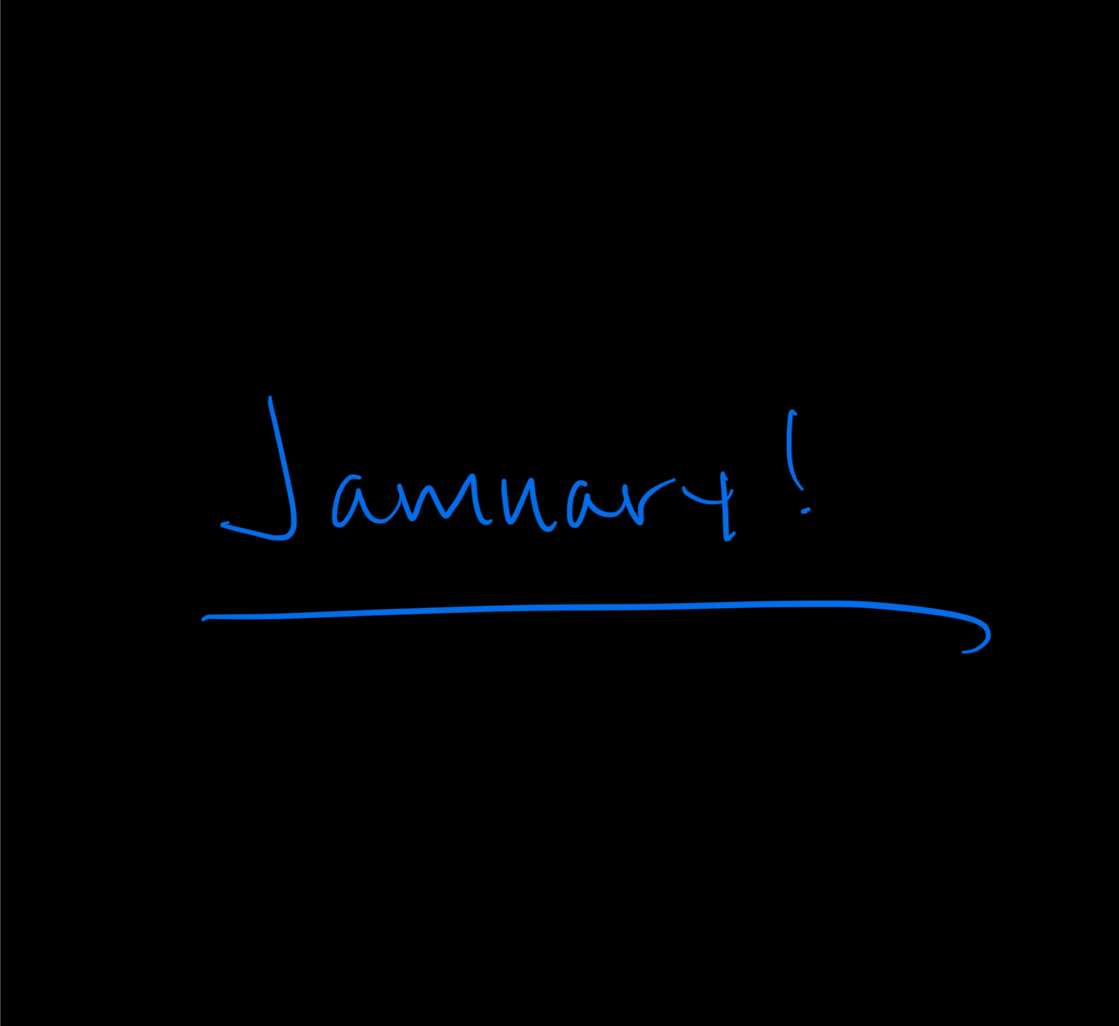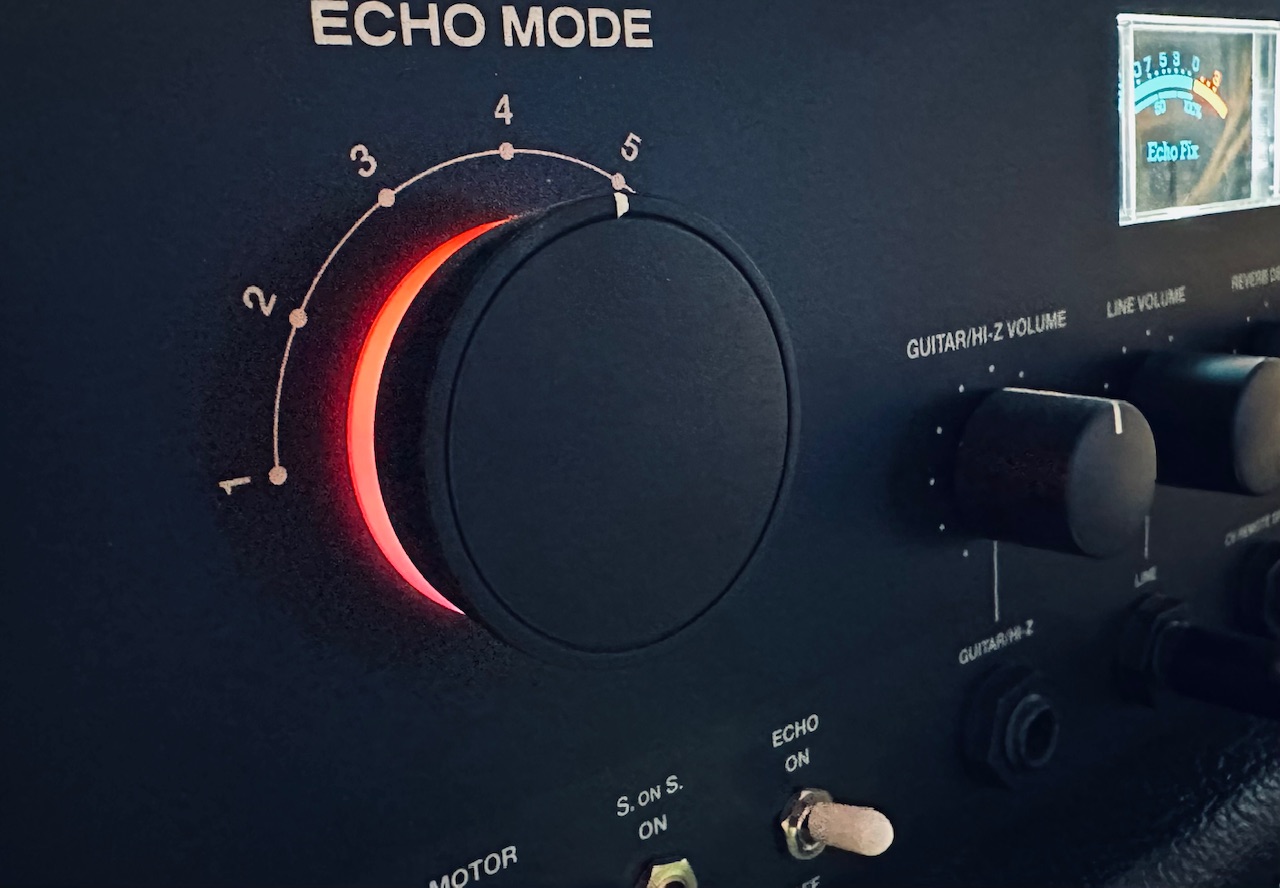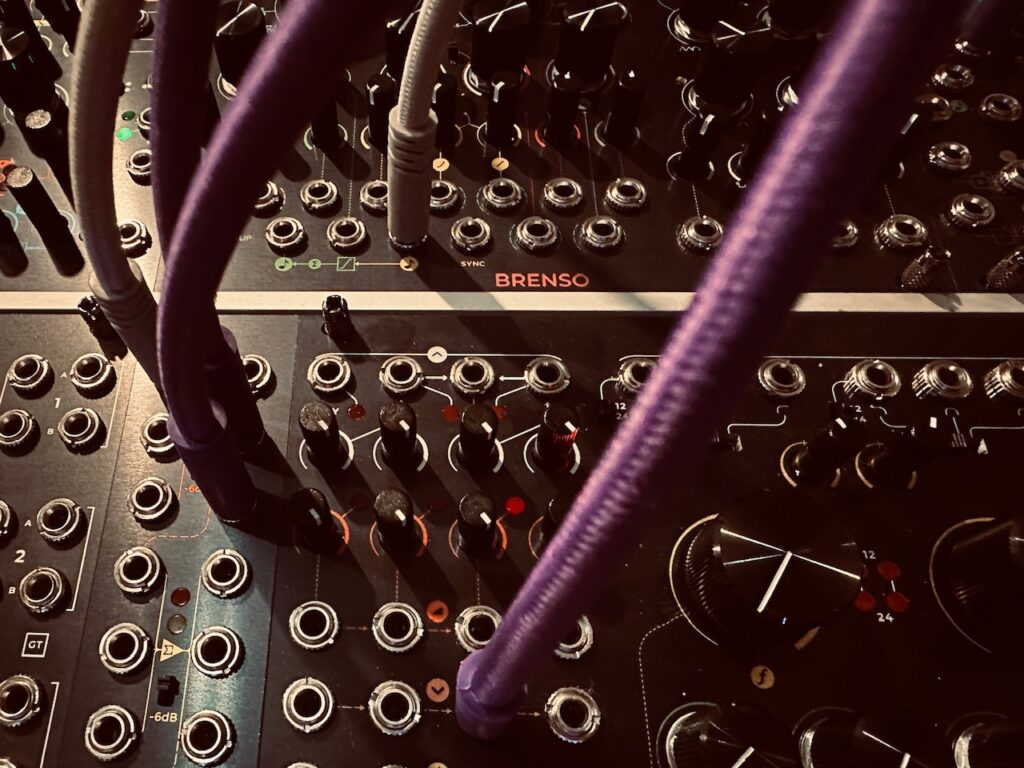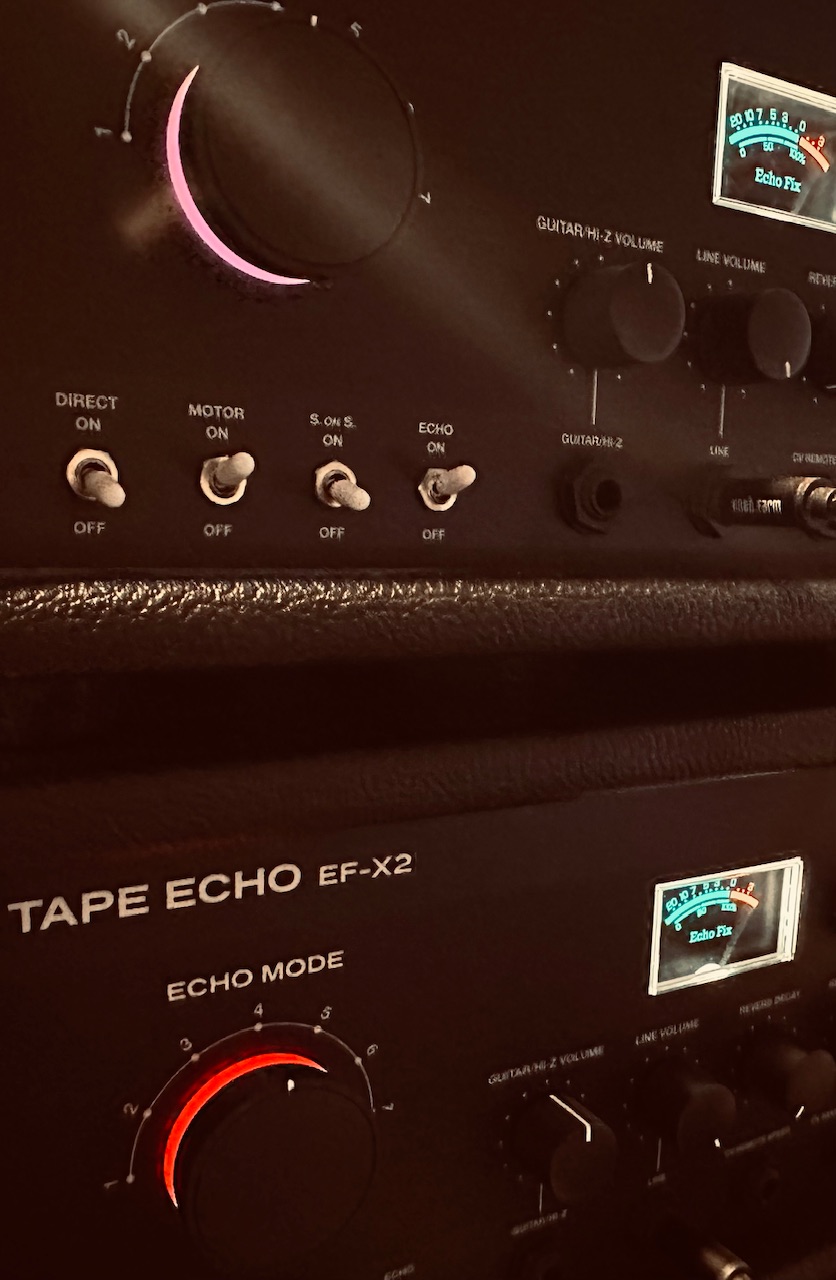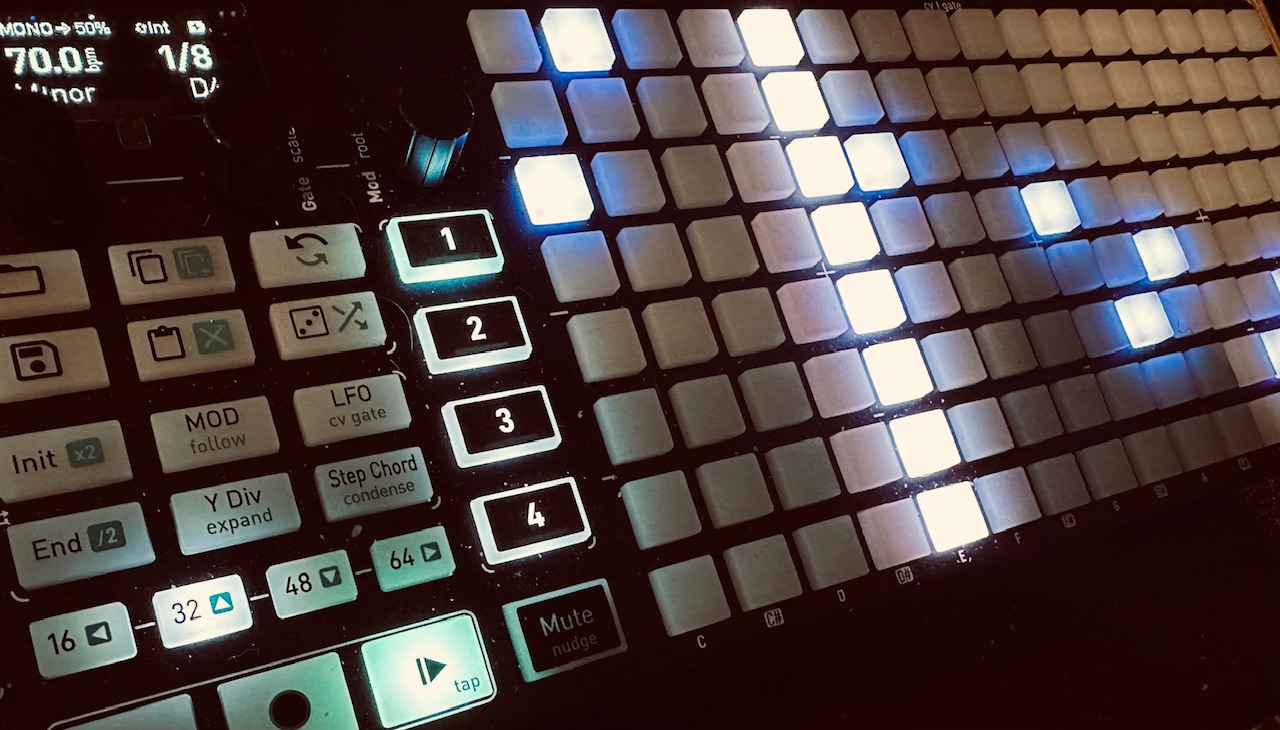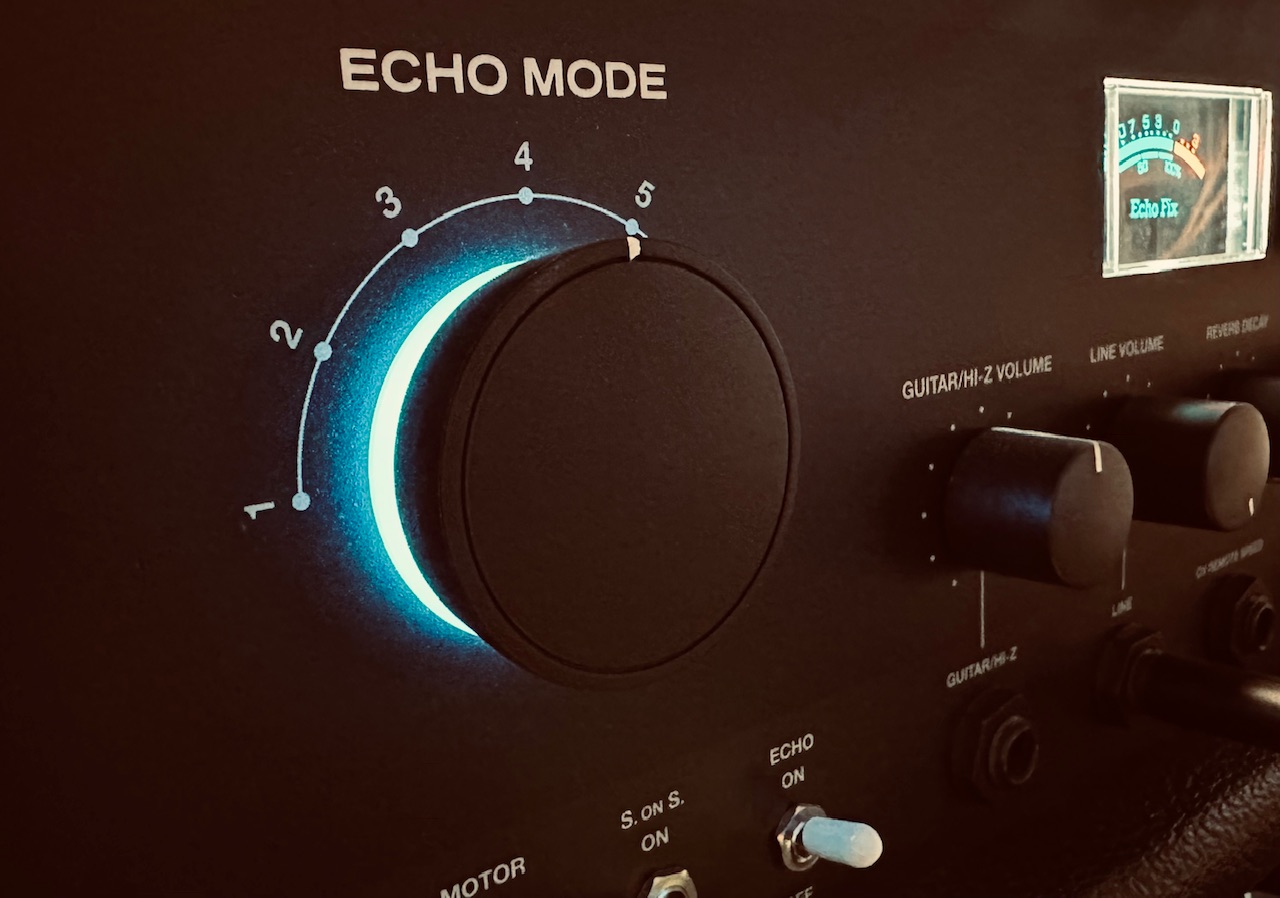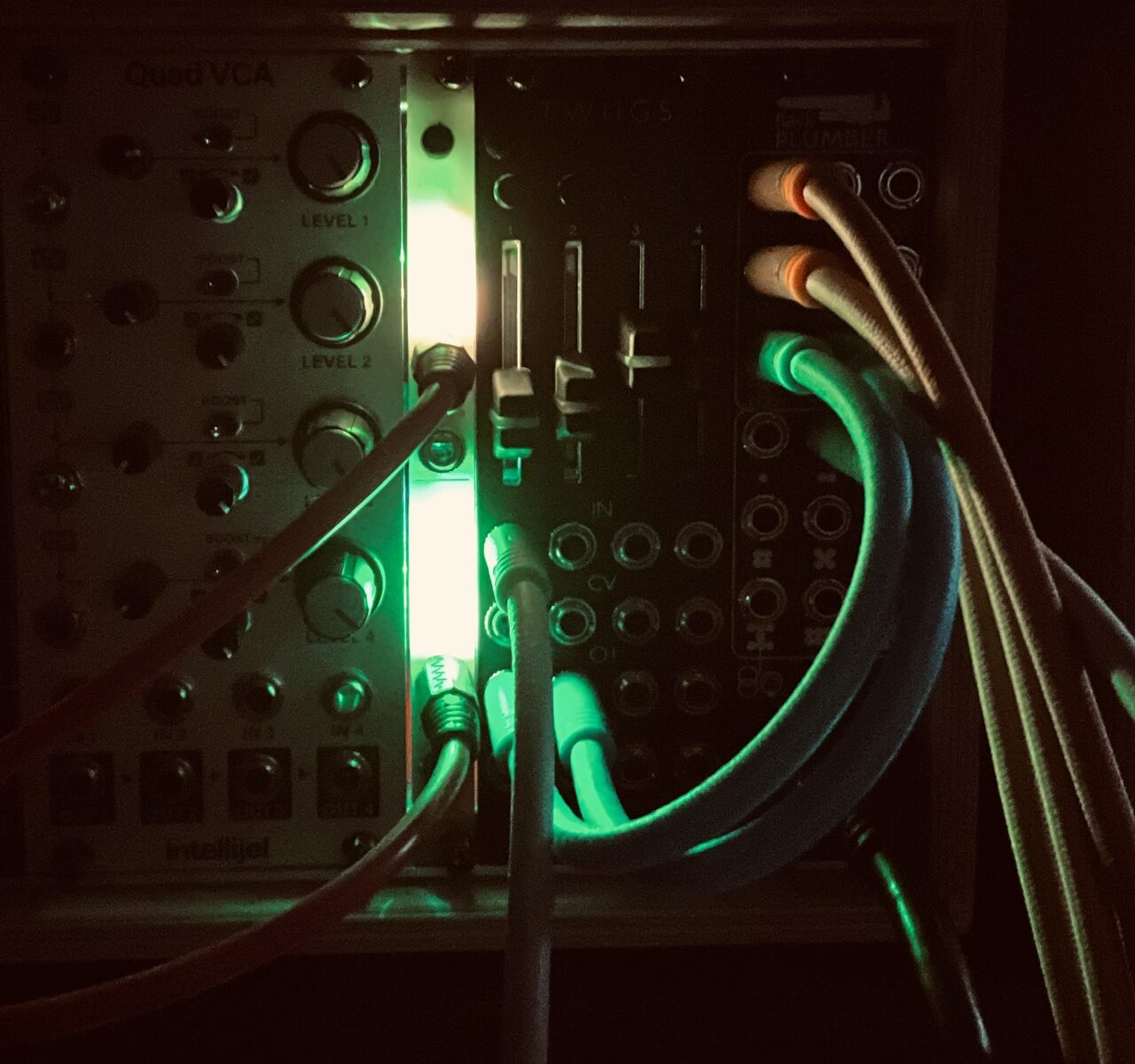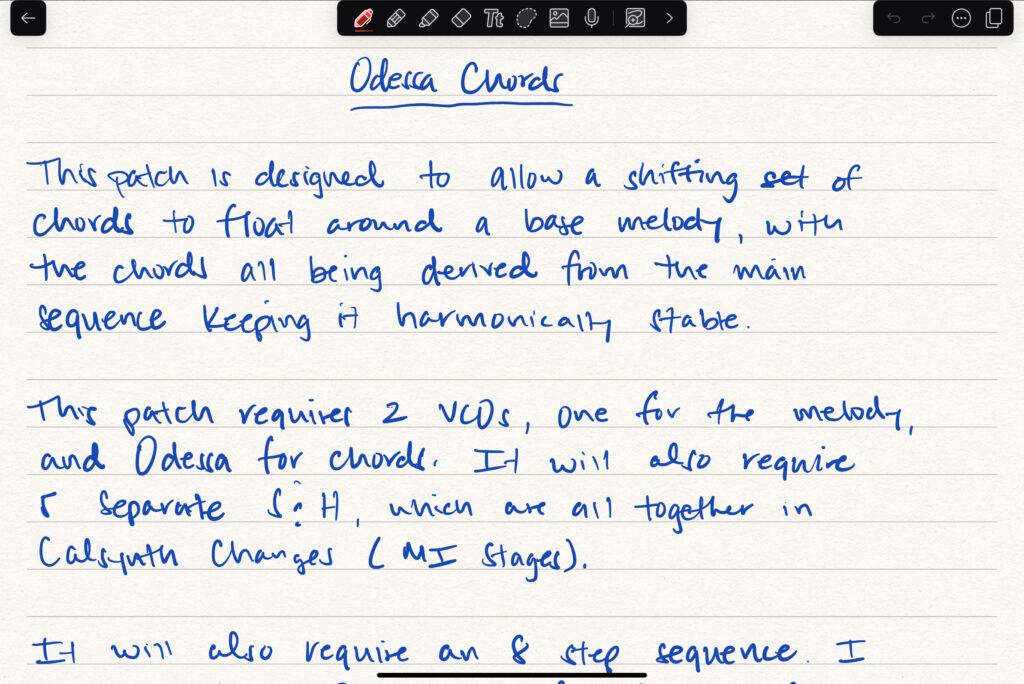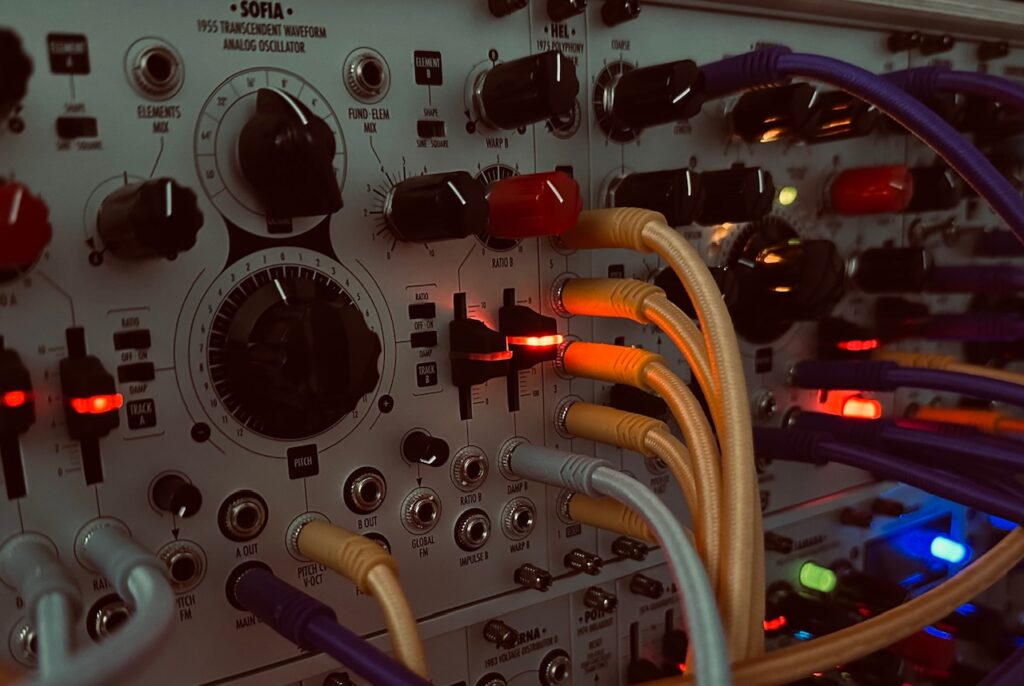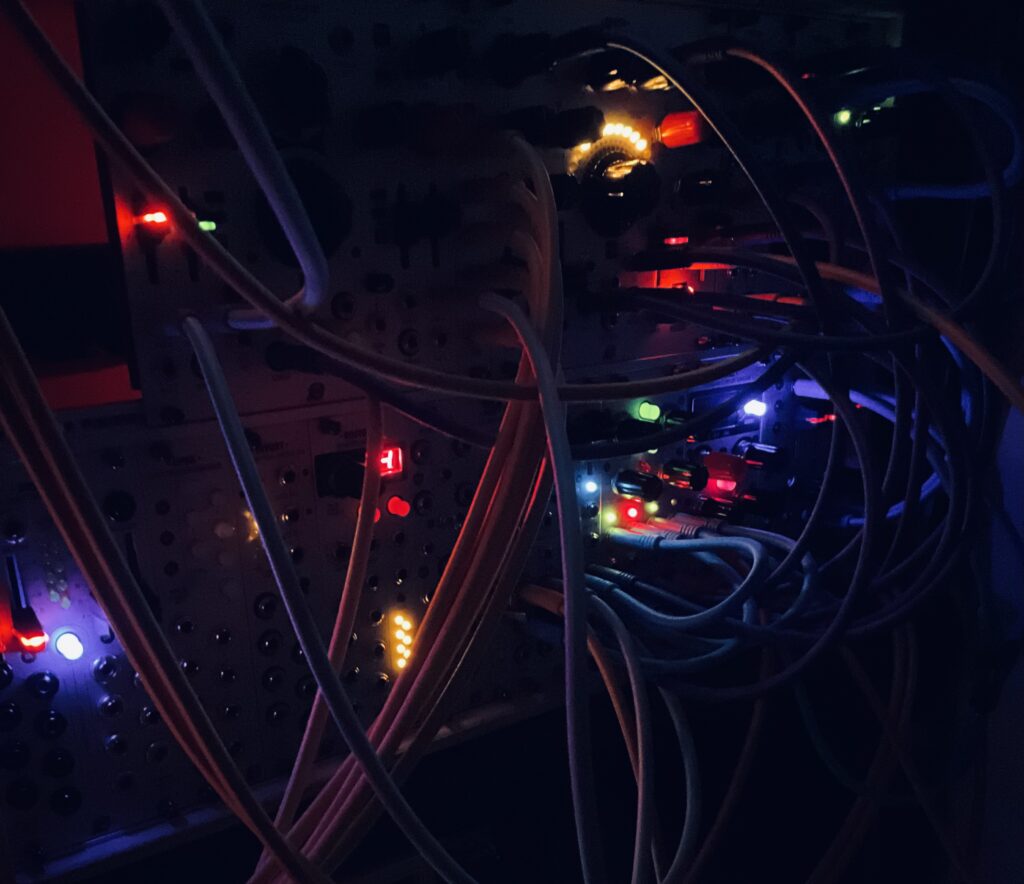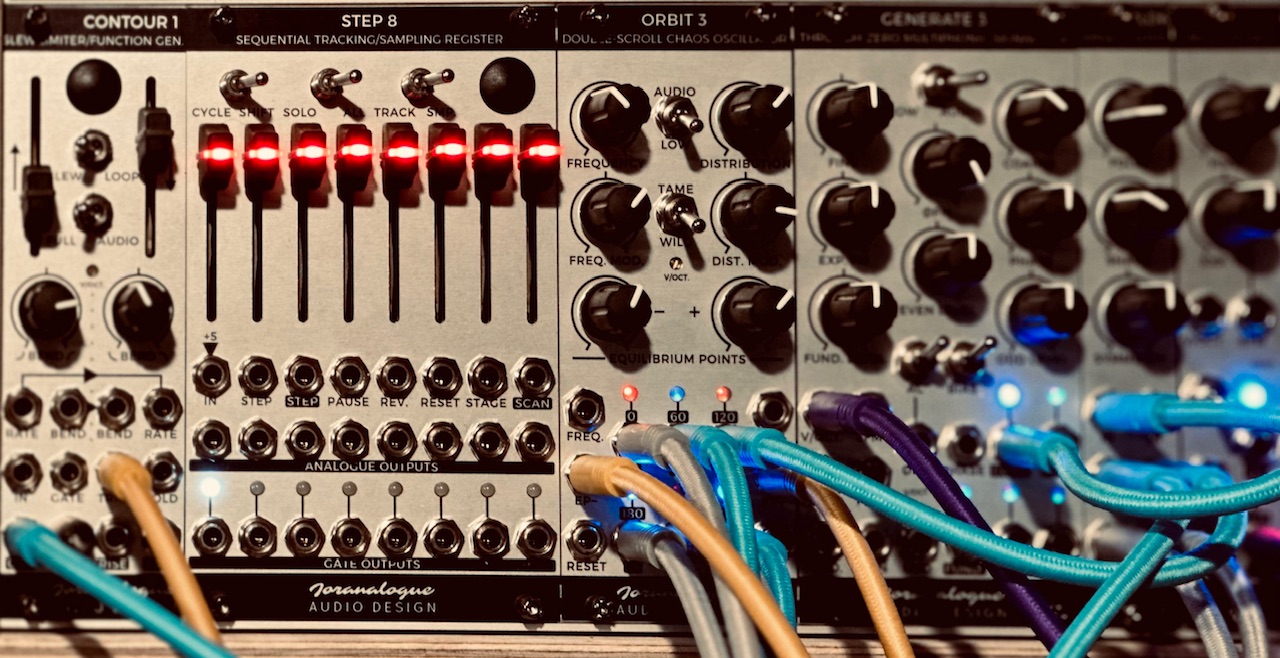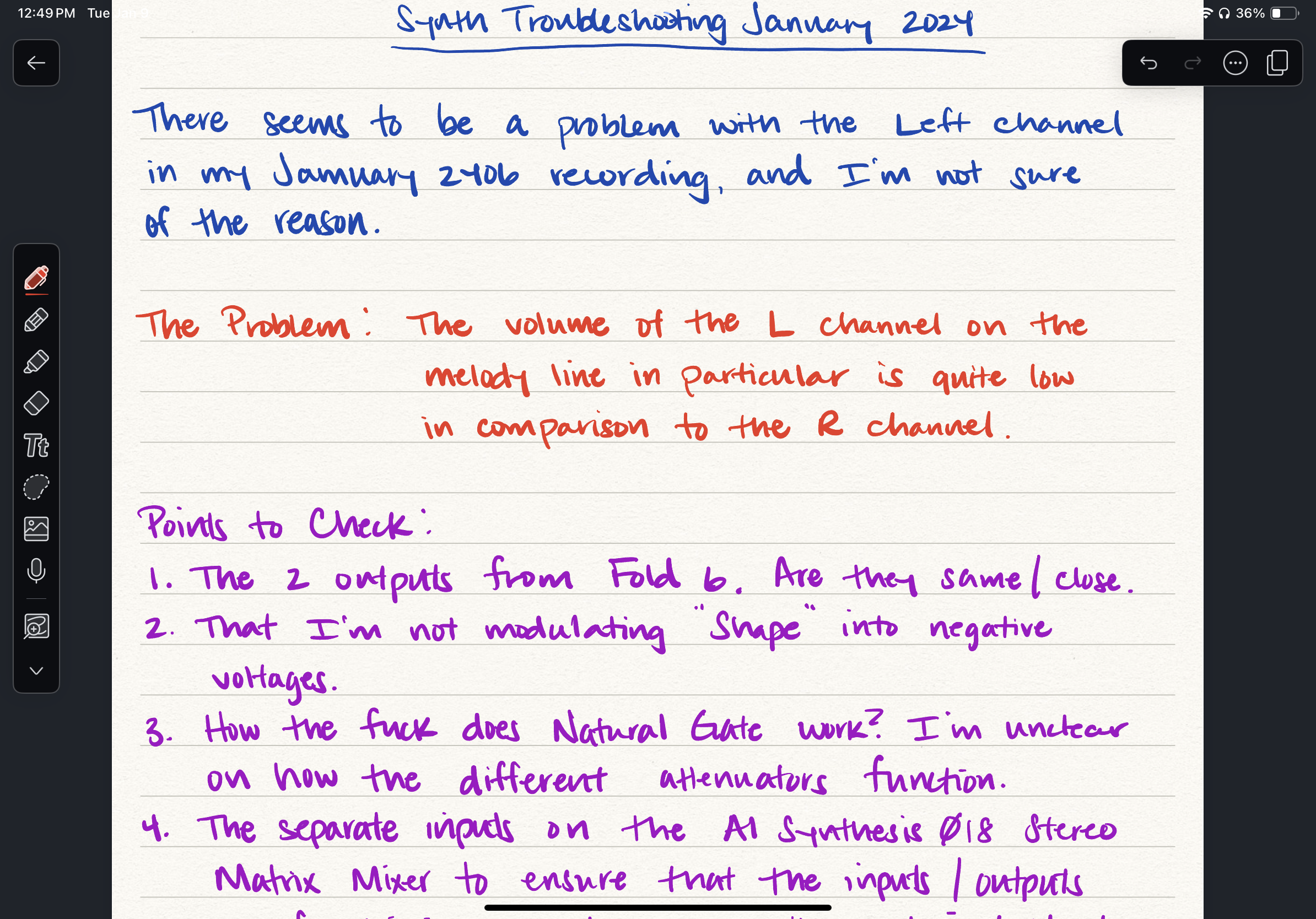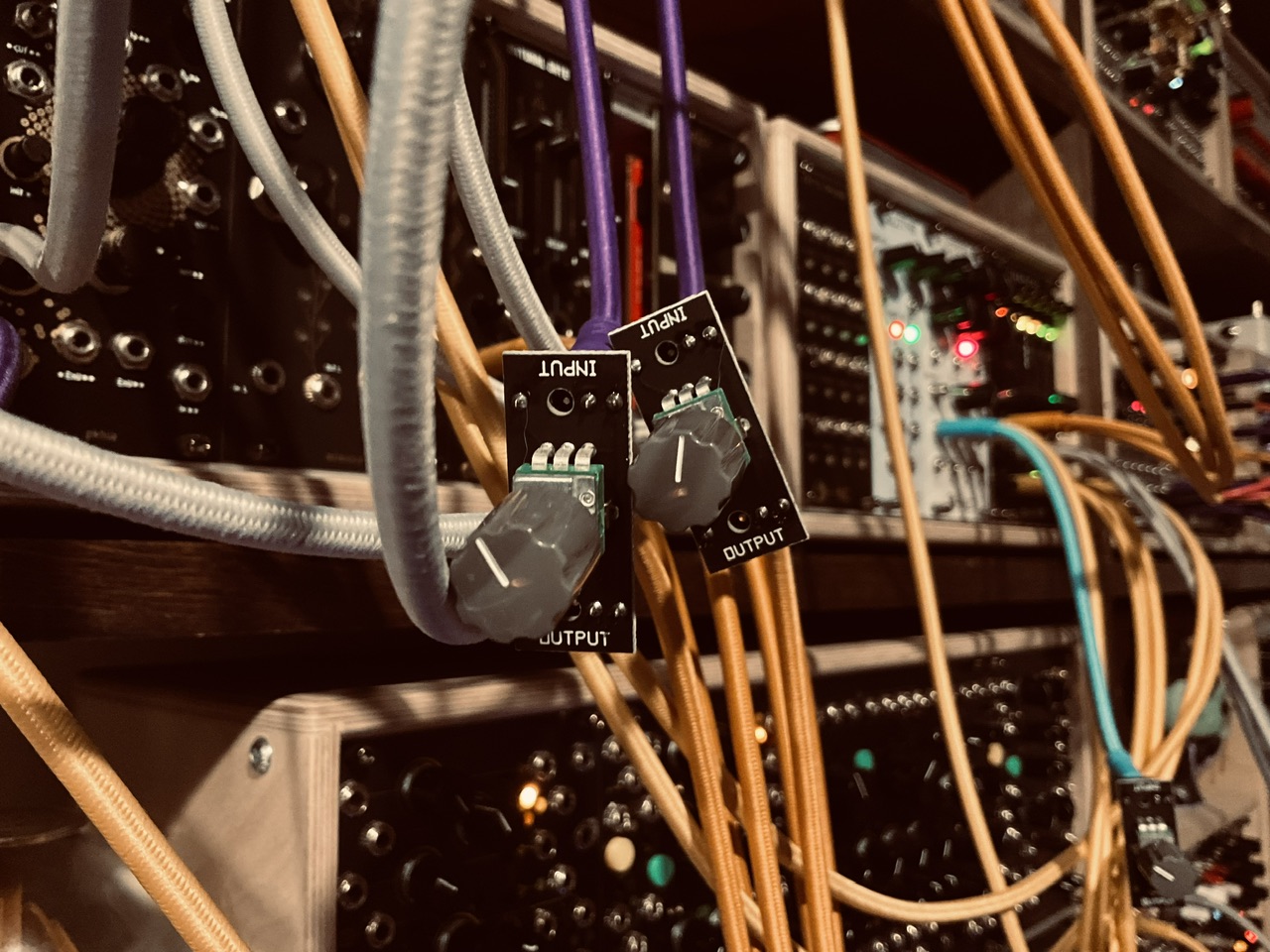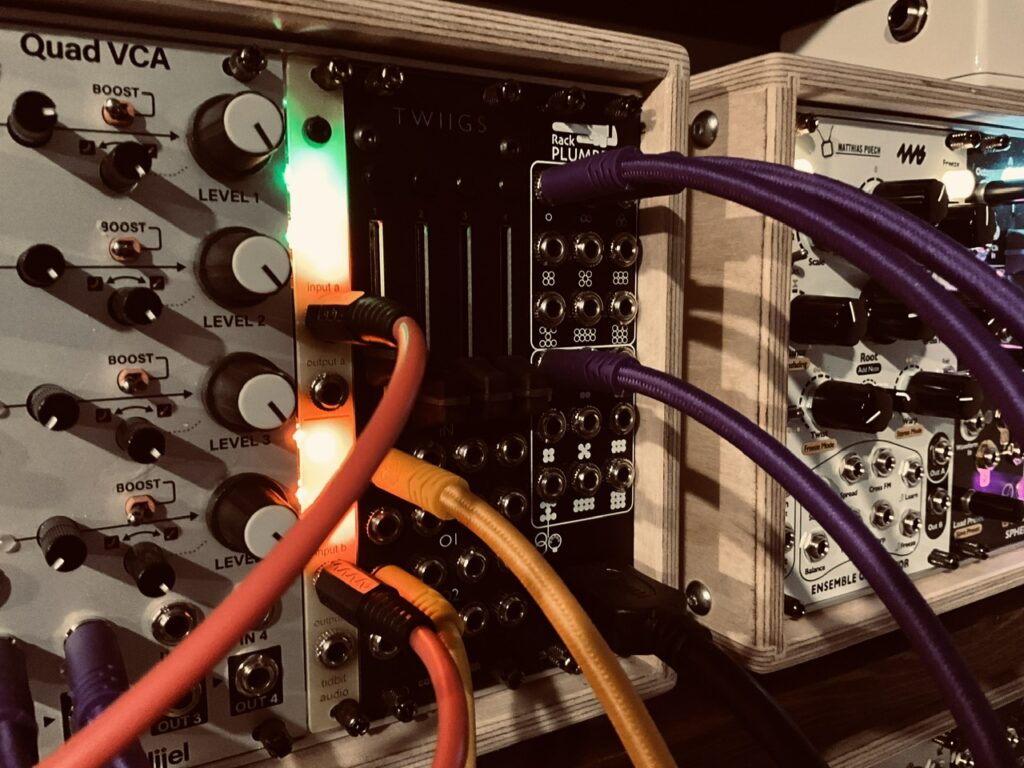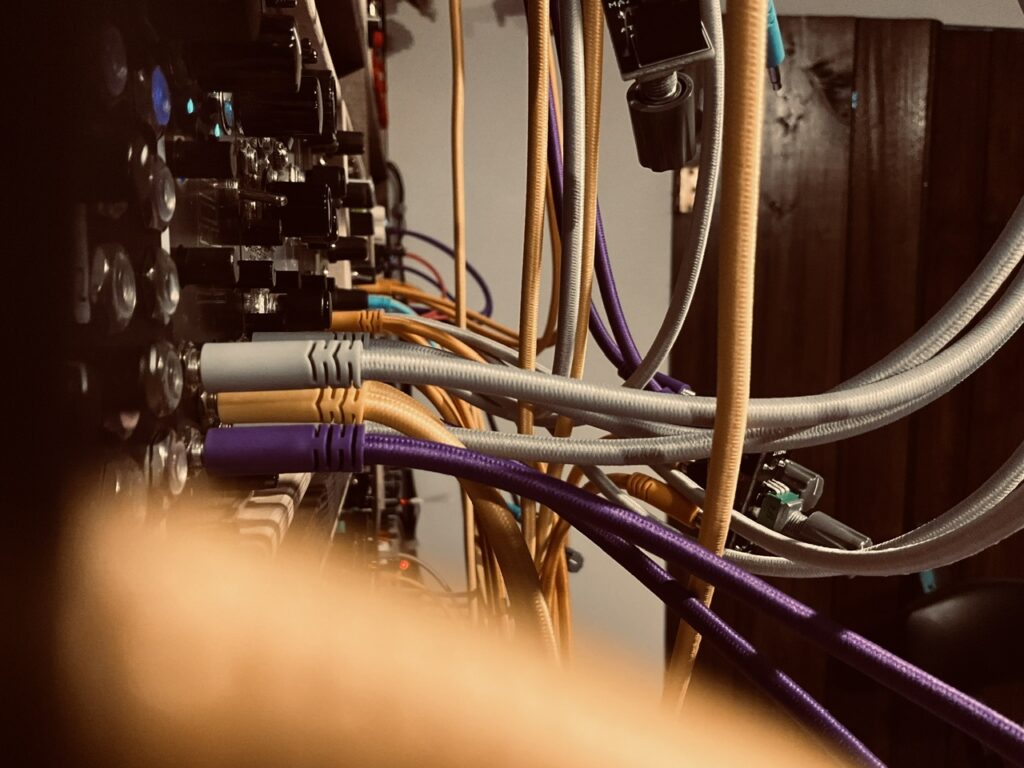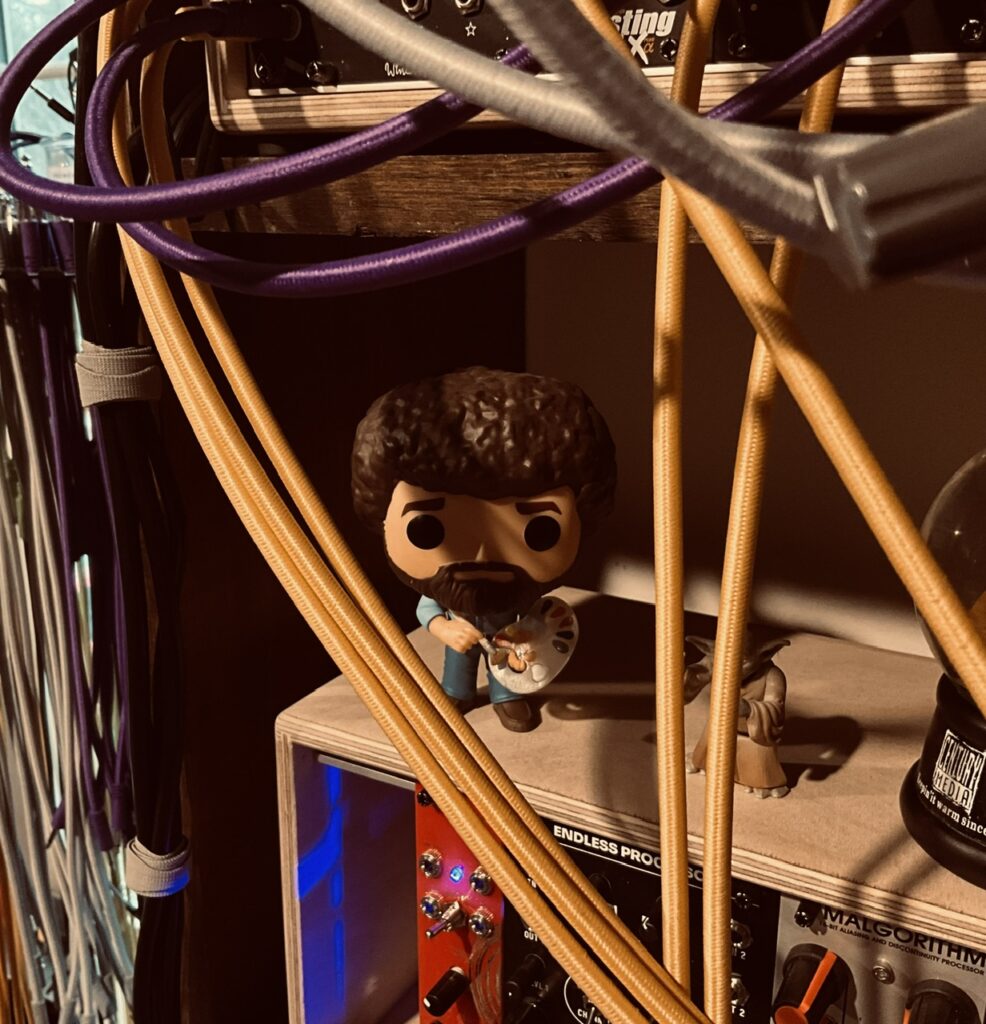Let me get this out there first. Jamuary, while highly rewarding in many aspects, was absolutely exhausting. The self-induced compulsion to create and record something musical everyday for a month is an arduous task, even in the best of times. When life gets in the way, as it inevitably does, finding the time required to create something can be a challenge, and finding the creative energy to pull through severe time constraints is even harder. Just this month, I’ve created (and written about – another aspect of patching for me) nearly three dozen pieces of music ranging from complicated and sprawling eurorack patches to fairly simple and minimally inspired jams on the iPad. That is about 60% the total number of recordings I made all of last year. Nearly six hours (5:59:46) over 33 new recordings in 31 days is an incredible feat for me.
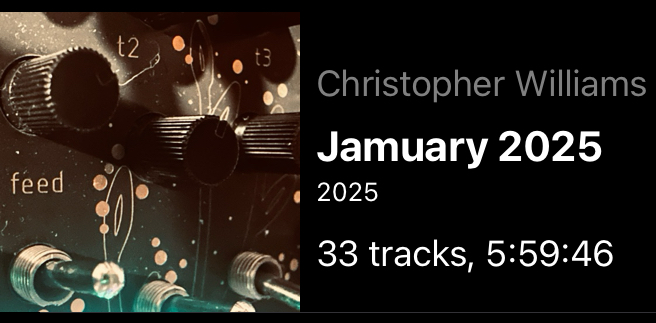
I’m proud of that accomplishment.
I didn’t come into Jamuary with the goal of making a recording every day. Like last year, I sought to do one every three or four days. Between work and family, life is busy. But with 2505 something happened. I had just made my seventh recording in five days, and creating 2505 was a really exciting experience for me. It was the first ambient patch I’d made with my Verbos system, and I was filled with ideas. I was on a roll, and determined to do more than last year. By 2510, I had resigned myself to recording something everyday. And so that’s what I did. On days I could take my time, I made a larger patch on the main synth. On days when I was more pressed I learned to use iPad instruments or worked up quick(er) patches on the Make Noise synth. Jamuary is less about product and more about producing. To act creatively everyday in a bid to spark more creativity. The more you do, the more you will do. There’s something to that idea because, despite having a level of fatigue and with zero intentions, I made an iPad patch on February 1st too, and recorded a beautiful patch on my Make Noise system on the 2nd.
During Jamuary I purposefully sought to do new things. To try new patching techniques or use new gear, and to use underused gear in ways I haven’t used them before. During this process I used several new (to me) techniques like ring modulation, creating dynamic triggers, and amplitude modulation using modulated noise. I purposefully sought to learn some more complex timing techniques with triggers and gates when more than one thing would happen at a time. I learned to use some of these instruments in ways I hadn’t before. It’s been an incredibly eye opening experience that has given me ideas which will take me deep into the rest of the year when I can more intentionally create without daily time constraints. Patching daily has helped to shed light on where I need improvement in my practice, and where my synth can be streamlined or made more suitable for my practice. Perhaps more importantly, Jamuary’s extensive experimentation has given me the confidence to experiment further throughout the year, and not only when I can use the informal nature of Jamuary as an excuse to not be good at something (yet). Being flawed is part of growth, and having the confidence to put out imperfect art is a major step forward.


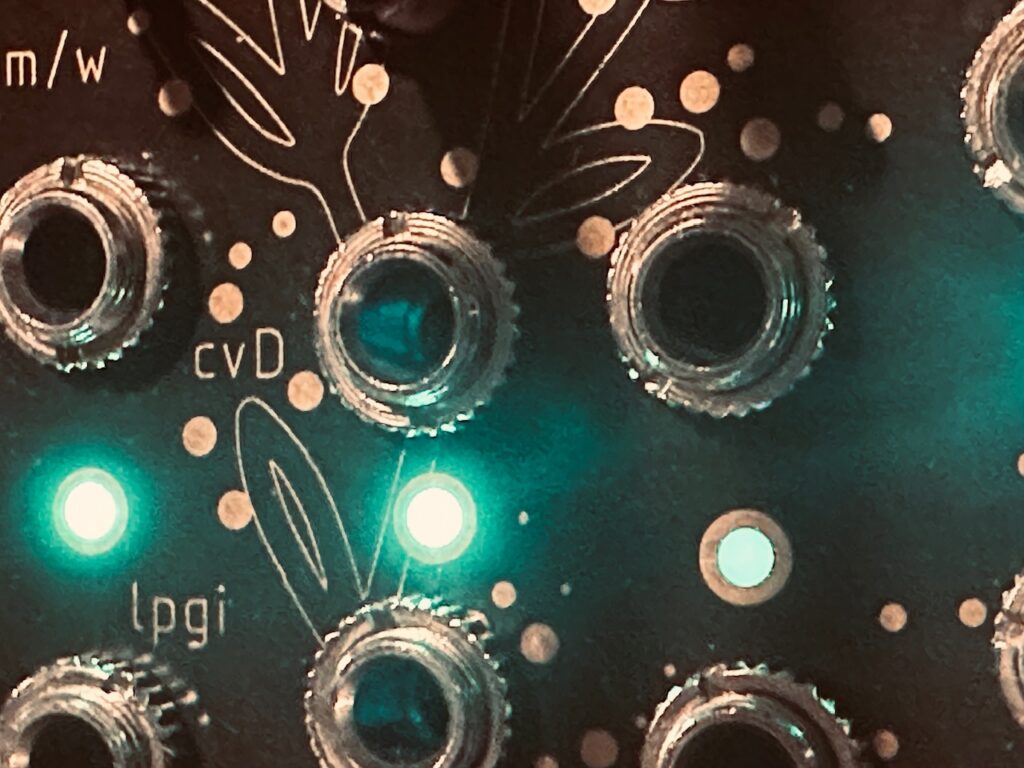

Most people would argue that, when creating art, quality is more desirable than quantity. Under most circumstances I would absolutely agree. I and most others would rather hear one solid recording than 31 mediocre ones. With the rush of a demanding timetable, art can turn into dreaded “content.” The lifeless stuff demanded by an arbitrary schedule. But in the context of something like Jamuary, I feel that quantity is better. Jamuary is a time for proverbial rough drafts; sketches of ideas you’d like to pursue in your more artistic endeavors. It pushes you to create something everyday, and, as with any endeavor, practice begets competence. The more you do something, the better you get at it. I could actually sense my patching becoming more fluid during one Jamuary patch in particular. I built Jamuary 2518 almost completely from a schematic in my brain that I put together throughout the day while I was at work. The patching was quick and easy, and the entire session simply flowed freely. It wasn’t dissimilar to the feelings I had as a kid learning to play the trumpet.1 It’s a feeling of freedom, when you know what you want to accomplish, and can do so forthwith. The sense that you’ve taken a step towards mastering your instrument.
But these lessons come at a cost. For example, I can only remember a fraction of my Jamuary patches. About one in three. Jamuary 2505, 2507, 2508, 2509, 2511, 2513, 2518, 2522, 2526, and 2527 are particularly memorable, even if I couldn’t identify which is which from memory. Most of my recordings this month have melded into an amalgamated mass in my head. I generally document most of my patches thoroughly both here and even more in depth in a Notability notebook I’ve kept for years. But with the rush and severe time constraints imposed by Jamuary I haven’t had the time to document more than short synopses, if that much, which I’m hoping doesn’t come to bite me down the road while trying to perform a technique that I only have scattered notes on. Part of the reason for not writing as much is the extreme time constraints Jamuary imposes, particularly in the context of real life. Another reason is that I’m exhausted. Once I’m done with my day, then create and record a patch, I scarcely have the energy or drive to write much and document more thoroughly. During a normal month with a normal patch, I might use a couple of weeks to patch, tweak, and record a track, taking copious notes along the way. I might take another week writing about it. It’s a much more open-ended way of working that allows for reflection and improvement to better service the patch and accompanying post explaining it. Jamuary doesn’t provide for such luxuries.
Despite its taxing nature full of compromises, however, participating fully in Jamuary has been a highly rewarding experience. Not just in my own patching, but in my daily interactions with people from all over the world. To hear their daily creations has been as fruitful as making my own. On several occasions this Jamuary I was inspired by someone else’s recording, or by someone’s comments about mine, pushing me towards trying something new. Unlike every other Jamuary participant, I’ve posted my recordings exclusively on peaks and nulls (though there is another brave blogger who has used his own site too, even if with the help of SoundCloud). Most use some form of social media. Instagram or YouTube, mostly. As a result, I’ve certainly had a smaller audience than I might have had I chosen to use social media. But even with that choice, I’ve had visitors listen to and read about my Jamuary creations from every continent (except Antarctica). 42 countries in total, and while only sharing links to my daily Jamuary recordings in exactly two places, the Jamuary thread on lines, and DivKid’s Discord server, along with a couple of straggler links on Modwiggler or lines in specific threads, and all without help from The Algorithm. Though I may only get a fraction of listens that social media might otherwise provide, that I can still have an international audience by doing self-publication on my own blog where I have full control over how my music is presented only supports my choice to remain free of social media. Be the change you want to see.
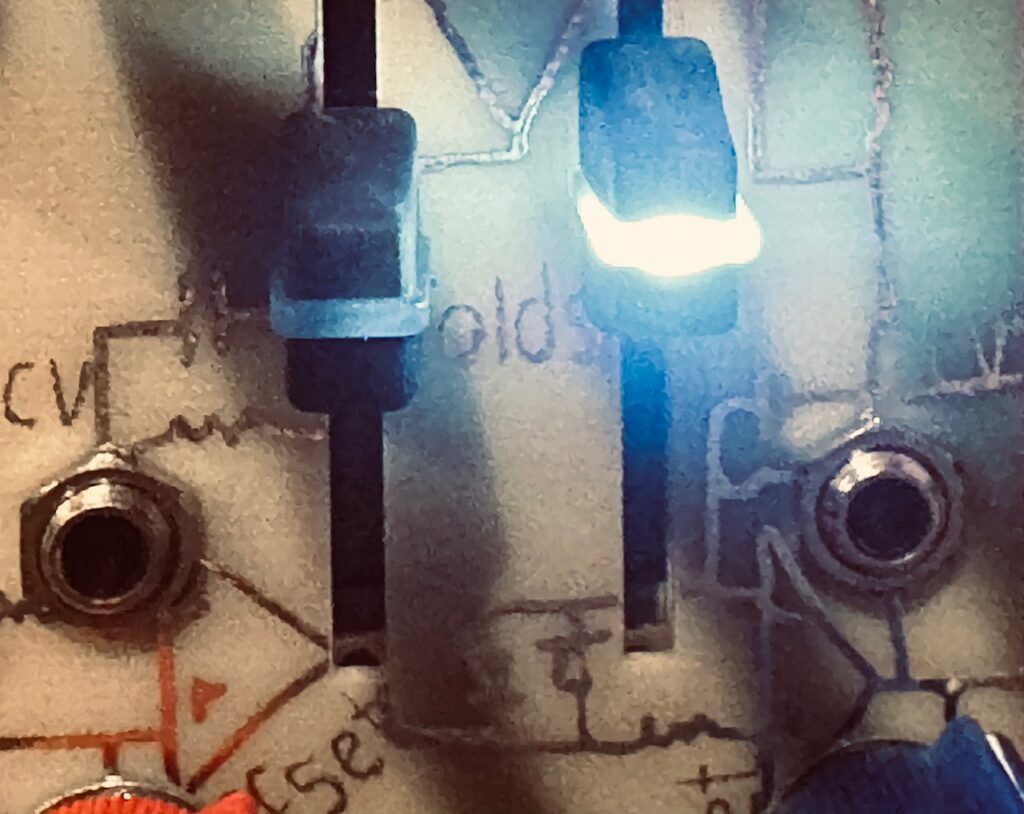
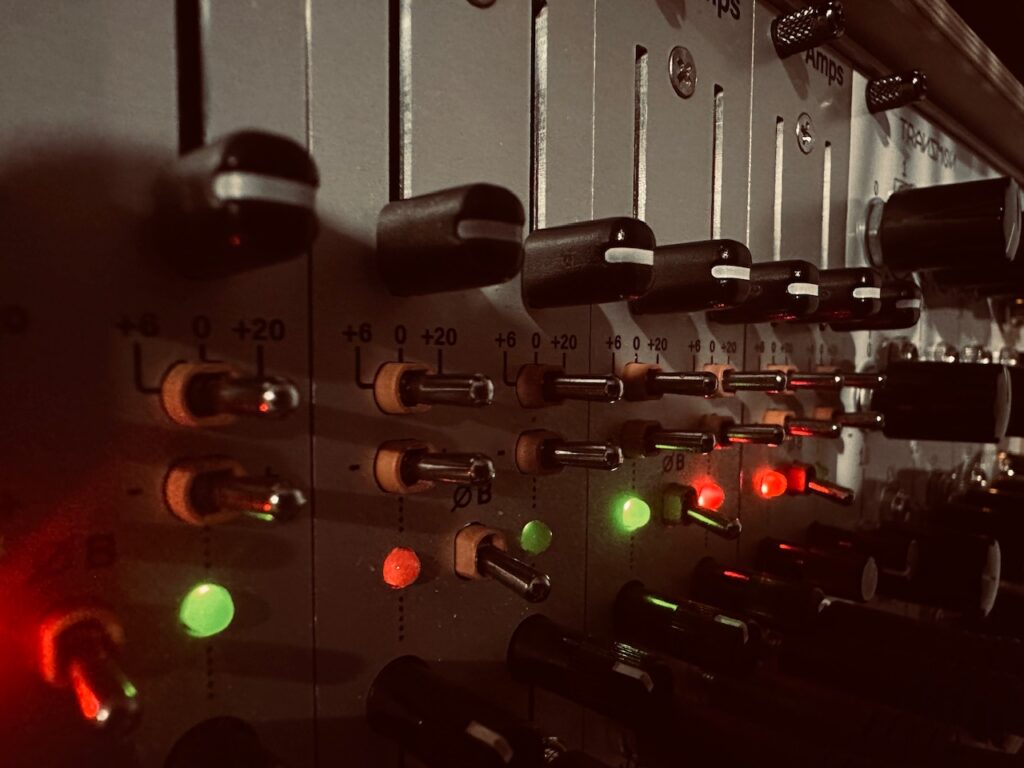
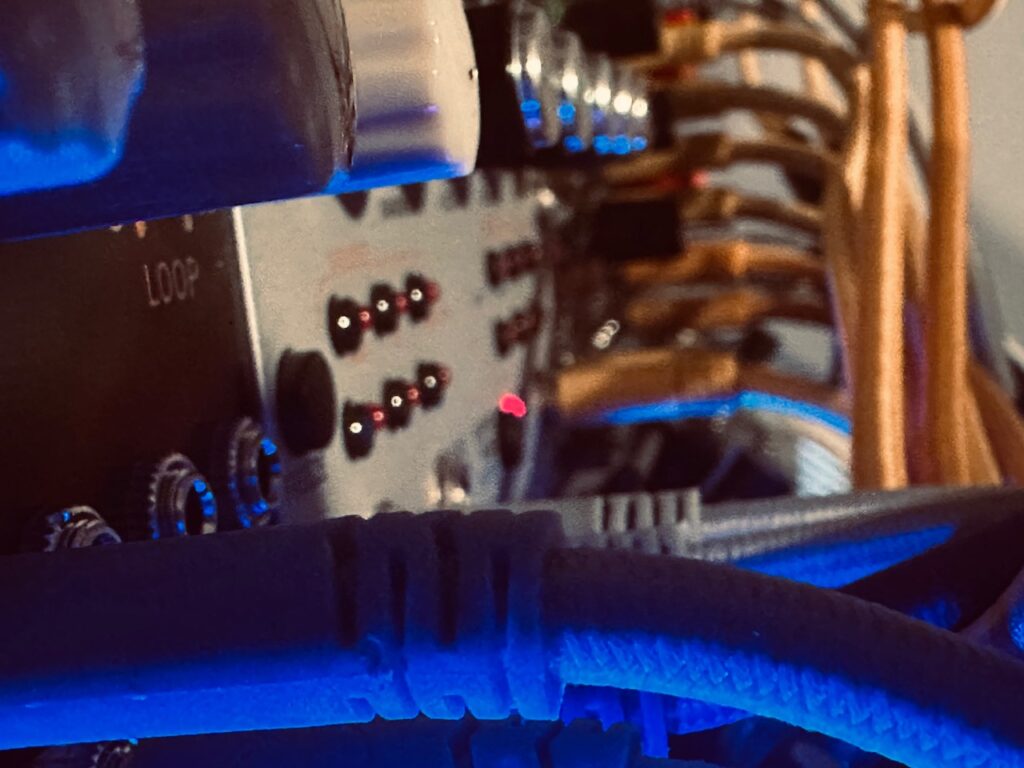
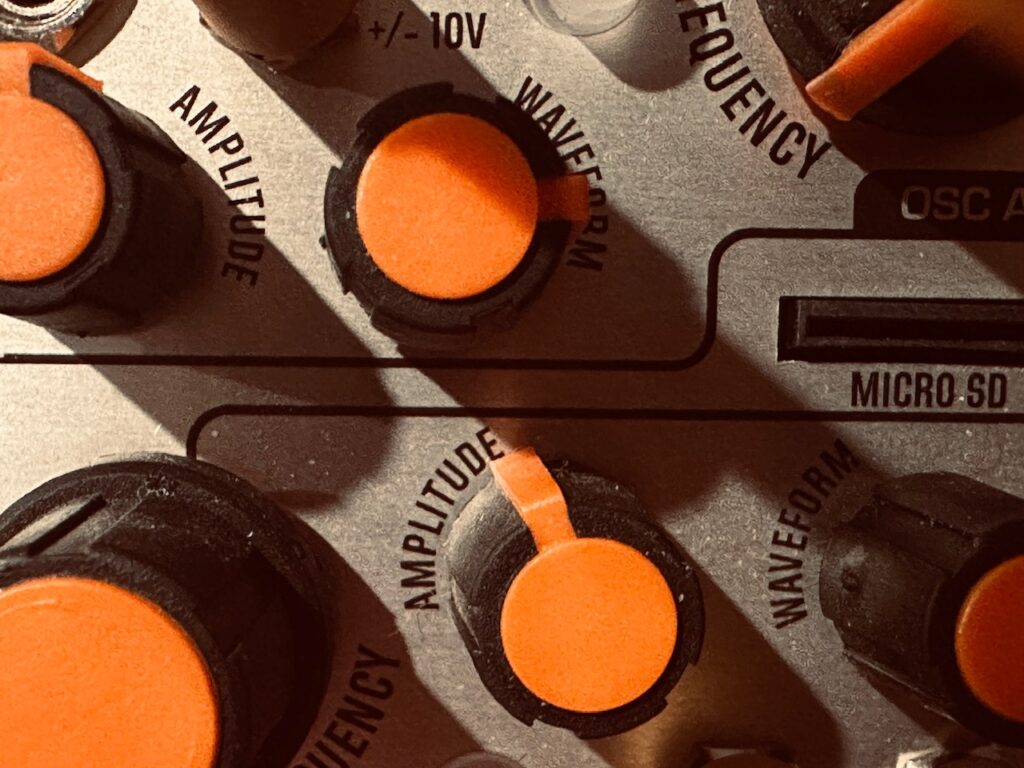
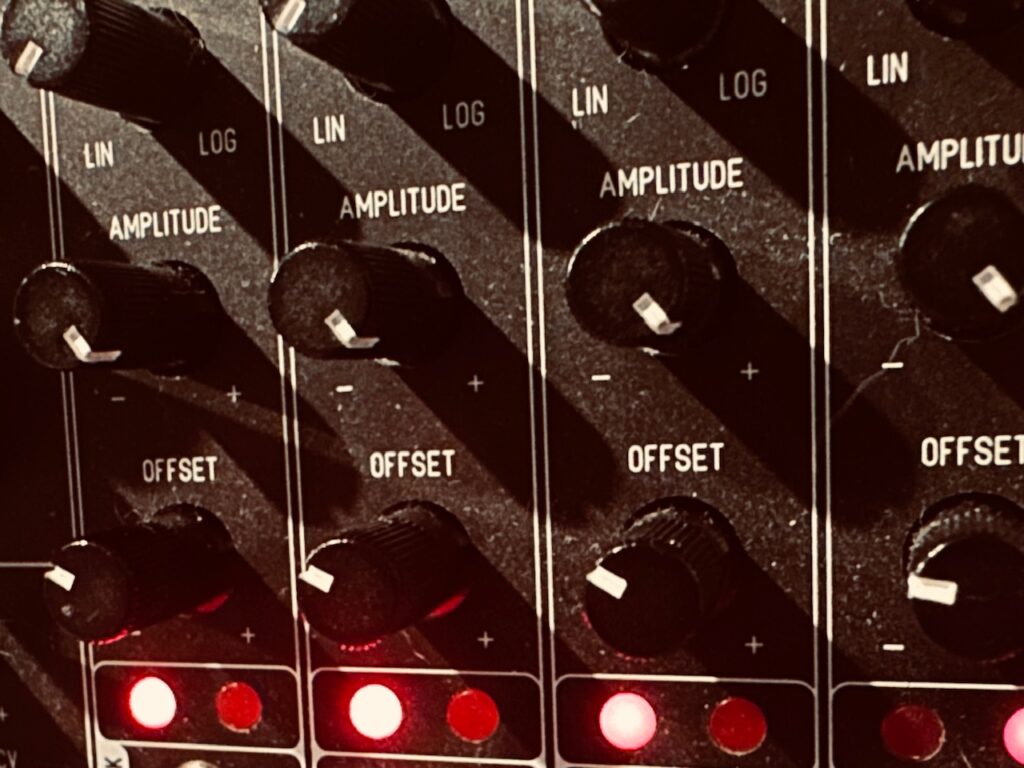
My single most listened to Jamuary recording (throughout the month) was Jamuary 2505, with 88 visitors through February 1 . 2505 is one of the handful of patches this past month that I remember vividly. It was a patch that centered on the Verbos Polyphonic Envelope and Harmonic Oscillator, phasing different harmonics in and out of audibility. There was even a bonus patch that also incorporated Panharmonium and the Dradd(s). It’s one of the best patches I’ve made with my Verbos case, and is something I’ll return to in the months ahead. As late as the 25th, it was in a seemingly insurmountable lead with nearly five times the number of visitors than the next closest post. Then something happened. A couple of scattered links on Modwiggler started to bear fruit. 2525, a beautiful Marbles > Rings > Beads patch, was hit with over 20 visitors in just one day. The next day I made a really fun Make Noise jam, and sprinkled a link on lines. Within two days 2526 had half as many visitors as 2505, and by the end of the month, had just four fewer visitors. It’s amazing what can happen when you put links in good places.
It would be very hard for me to choose a favorite Jamuary patch. It’s like trying to choose a favorite child. All of them have highlights and deficiencies, and I’ve done patches in several styles. Jamuary creations are meant to be sketches made during an avalanche of creative output which makes attachment to any one near impossible. Like I mentioned earlier, there are some patches I don’t really remember much at all from memory. But I do have several highlight moments in several patches. Whether the result of some cool patching technique or trick I figured out to make something work as I wanted it to, a happy accident, or a bit of joy at how much fun I was having, there are many memorable bits throughout Jamuary. The “crickets” in 2506 where I channeled a patching technique I gleaned from Ras Thavas’s experiments. A eureka moment in 2505 while performing an ambient patch with my Verbos case. Another eureka moment in 2511 using the same technique, only patched manually (as opposed to having a module do much of the work) with my Make Noise synth. Stepping well outside my comfort zone by using midi sequencers and software instruments in 2507, and expanding that patch with the modular in 2508, and running with the idea in 2516, 2520, and 2521. The absolute surprise of the wonderful stereo field I had when using the Optotronics Lockhart Stereo Wavefolder in 2514. The smile I had on my face while shaking that ass performing 2526. The moment that the Bizarre Jezabel Quarté Mk2 clicked for me during 2515, and was later reinforced, it’s intoxicating crunch having caused a major pivot away from the initial plan in 2527. Getting to know the Spectraphon in several patches. The Gloop, particularly during my run through just before recording 2530. All of these moments have left lasting impressions and given me ideas for many patches to come.
Overall I can’t tell you how many discreet modules I’ve used this Jamuary. Going back through 31 days of module lists for collation isn’t really a task I’m interested in performing, even if I would like to know the answer. And outside of the AI Synthesis 018 Stereo Matrix Mixer, ST Modular SVCA, and Knob Farm Ferry, which were used in every patch on the main synth, I don’t know which one was used most. My impression, however, is that the Frap Tools Falistri is likely in that conversation. Either as an envelope or a modulator, I felt like I used it in an over-represented number of patches, but such is the utility of good tools (no pun intended). The CuteLab Missed Opportunities seemed to find its way into most patches. My chain of Intellijel Amps was also used copiously, and in various ways. As bog standard VCAs, a mixer or mixers, and even a large mult, spreading various attenuated and/or modulated copies of a CV around the synth that controlled all modulation throughout a patch. The Dradd(s) and Veno-Echo made several appearances.
But it wasn’t just the sheer number of modules I used. Throughout Jamuary I explicitly sought to use several new-to-me modules, or modules that have gone underused for one reason or another. The Make Noise Spectraphon was the biggest highlight for me in this category. I’ve had it for a couple of months, but never installed it until just before I performed my first patch with it during 2511. After a handful of uses this Jamuary it has now become my favorite Make Noise oscillator, and I’ve only really scratched the surface with one mode. Other modules I finally got around to using for the first time were the Mannequins Just Friends, Verbos Voltage Multistage, Sequence Selector, and Polyphonic Envelope, Mutable Instruments Blades and Tides v2, Optotronics Stereo Lockhart Wavefolder, Vostok Instruments Asset, Nonlinearcircuits Helvetica Scenario and Let’s Get Fenestrated, 4ms Dual Looping Delay, Cutlasses Gloop, and of course the Disting NT. There are probably others.
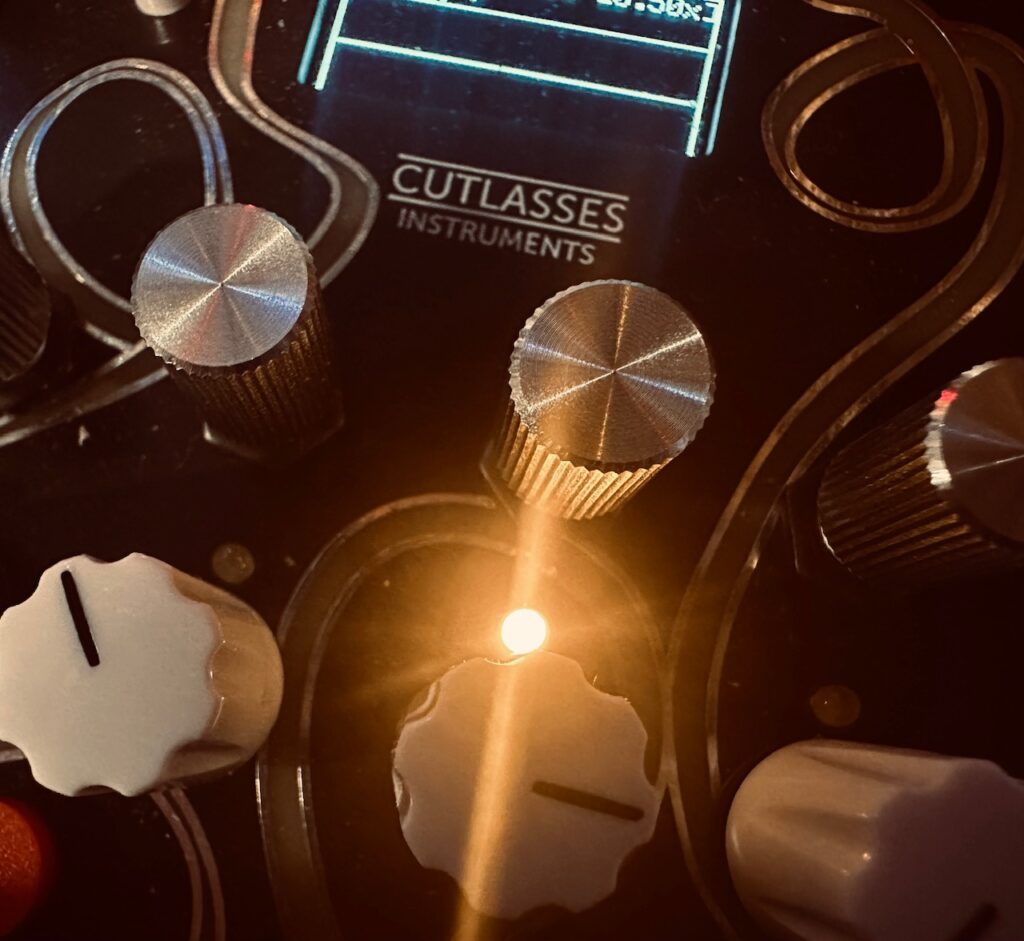


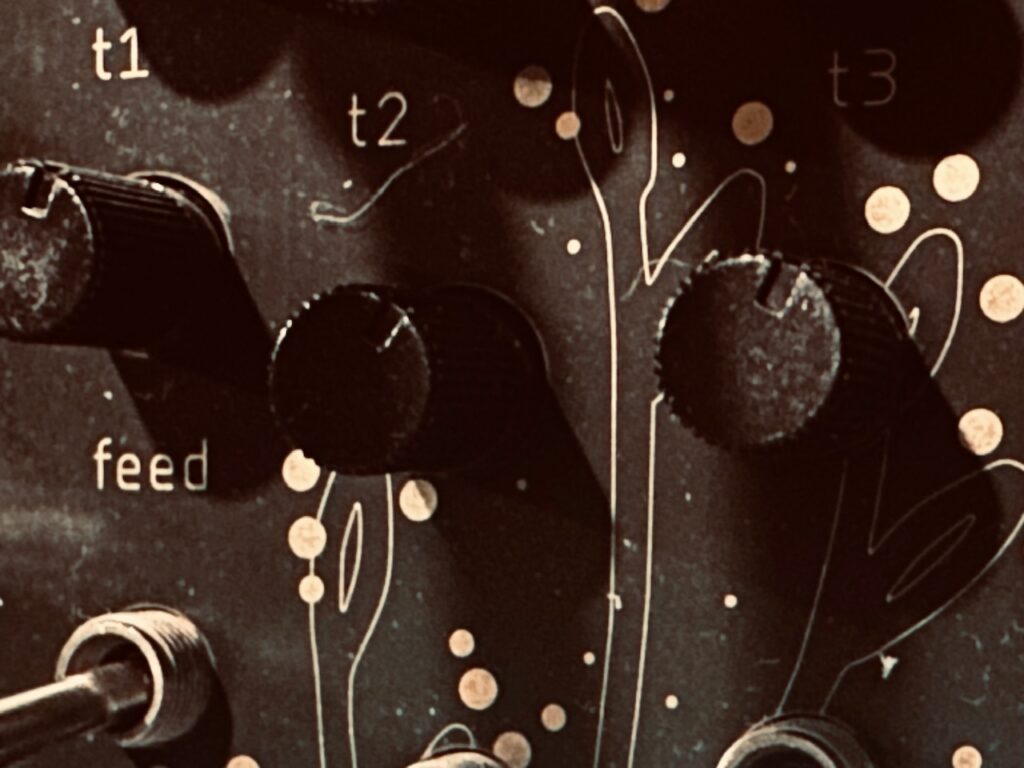
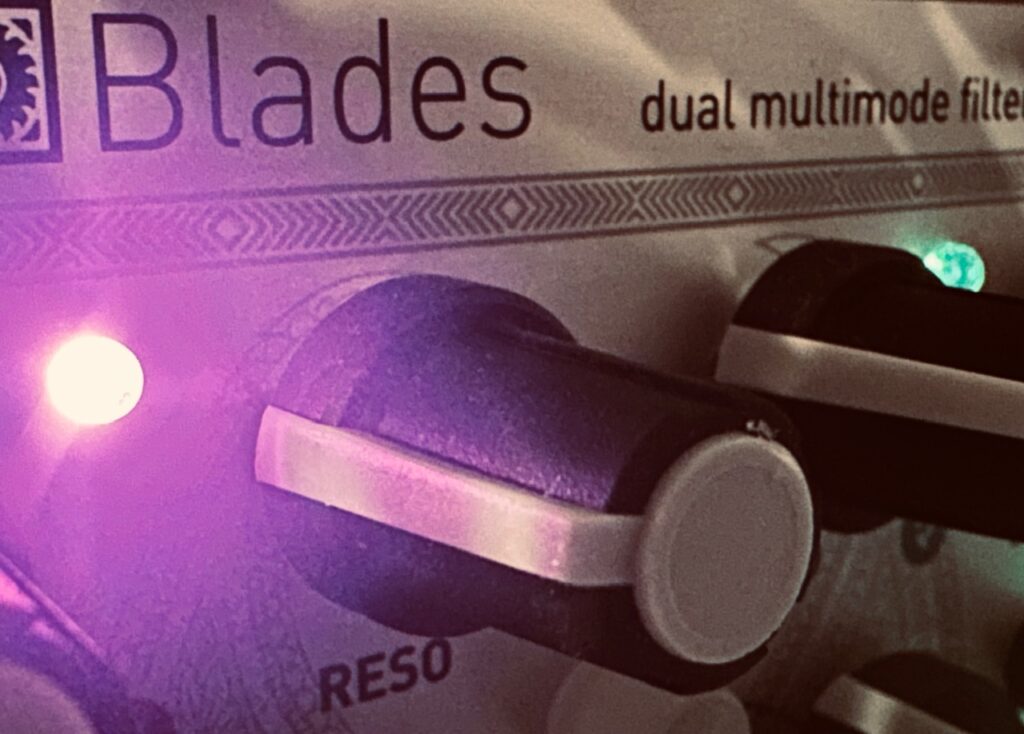
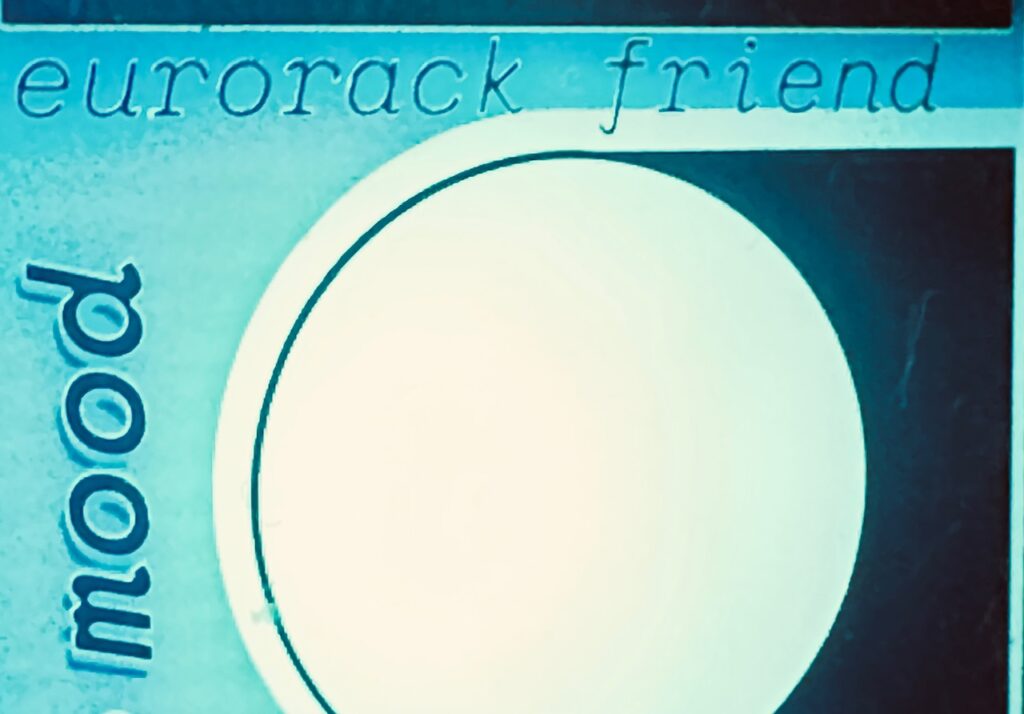
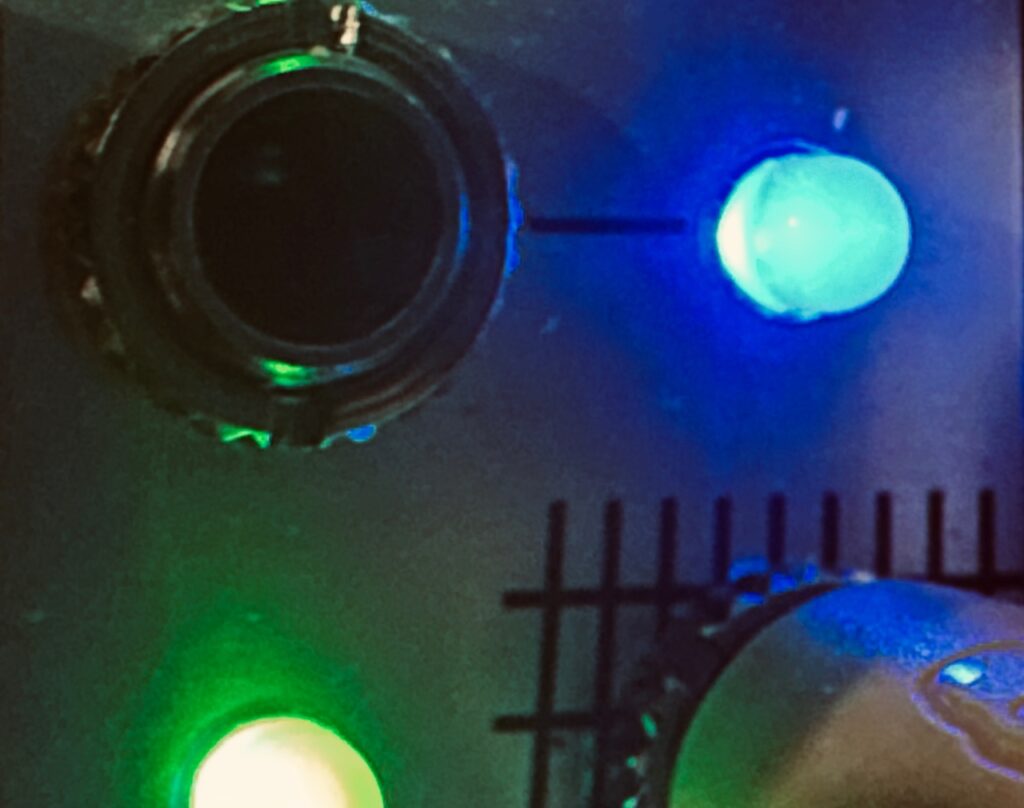
There are also other modules I hadn’t used in some time. All of the Verbos case had been out of action being expanded for the better part of the last nine months before Jamuary. Ditto with the Mutable Instruments case. It had been more than a year since I used Rings and I can’t remember when I last used Data Bender before 2525. Ditto Kermit Mk3, which made a prominent appearance in 2506, and will surely make others throughout this year. I’ve also explored functionalities I haven’t used very much within modules that I regularly use. I finally got around to trying, however little, the wave shaping and wave folding abilities of the Frap Tools Brenso. Up until Jamuary I’d used Brenso sparingly, and only with the sine or triangle wave outputs. The four quadrant multiplier in Falistri and ModDemix got a fair amount of use for the first time as I explored ring modulation in various patches throughout Jamuary. Before now they’d only been used as regular VCAs. I also used Falistri fairly extensively as an oscillator, and will be doing that much more as I move to a quad Falistri system.
I, of course, also delved, for the first time, into using only midi and software instruments during several Jamuary recordings. I’ve certainly messed around with multisample instruments before, but it’s always been more of an “Oh, look. This is pretty cool, I guess” sort of experience. I’d open Decent Sampler, load in an instrument, play the built-in keyboard for a while, then close it back up while saying something like, “I should try doing this with the modular.” Well, this Jamuary I did, and I’m very glad I took that very unnerving first step. Some of my prettiest creations were a result of using the iPad environment. I greatly enjoyed the feeling of having created something different such that I’ve taken positive steps towards having more integration between hardware and software environments by getting a Befaco MIDI Thing v2 so that I might be able to use software sequencers, particularly the wonderful Alexandernaut Fugue Machine, with my synth.
Jamuary also had me realize the necessity of and how I rely on some functionalities. It has never been more clear to me how integral a stereo matrix mixer is to my patches. The AI Synthesis 018 Stereo Matrix Mixer is used in every patch on the main synth. As my patching has become more involved and complicated, I’ve leaned on it more and more, to the point of realizing the four channels of I/O is just not enough. There were several patches throughout this Jamuary when I had to find workarounds for not having enough in the matrix. It’s prompted me to get the new Addac Systems Addac814 6×6 Stereo Matrix Mixer, an expandable system up to (and perhaps beyond) an 18×18 channel configuration. It’s bigger than the 018 (33hp vs 18hp), has odd hp (which is always awkward), and has a non-standard UI for a matrix mixer which will take some time getting used to, but the tradeoffs seem like the extra channels and potential expandability will be worth it. I’ve also realized just how much I like pinging. Whether filters or LPGs, pinging has become an important part of my patches. It’s my main way of imparting some sort of percussion-like sounds, and no single sound in Eurorack quite compares to the beautiful decay of a well tuned LPG, whether vactrol or otherwise.
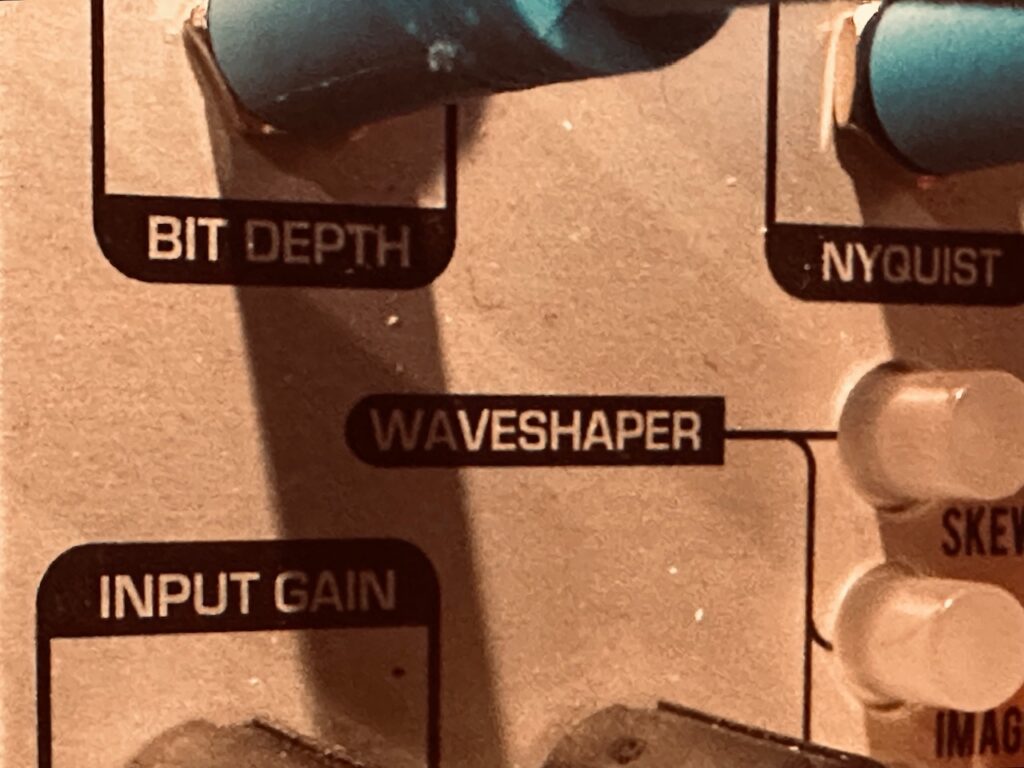
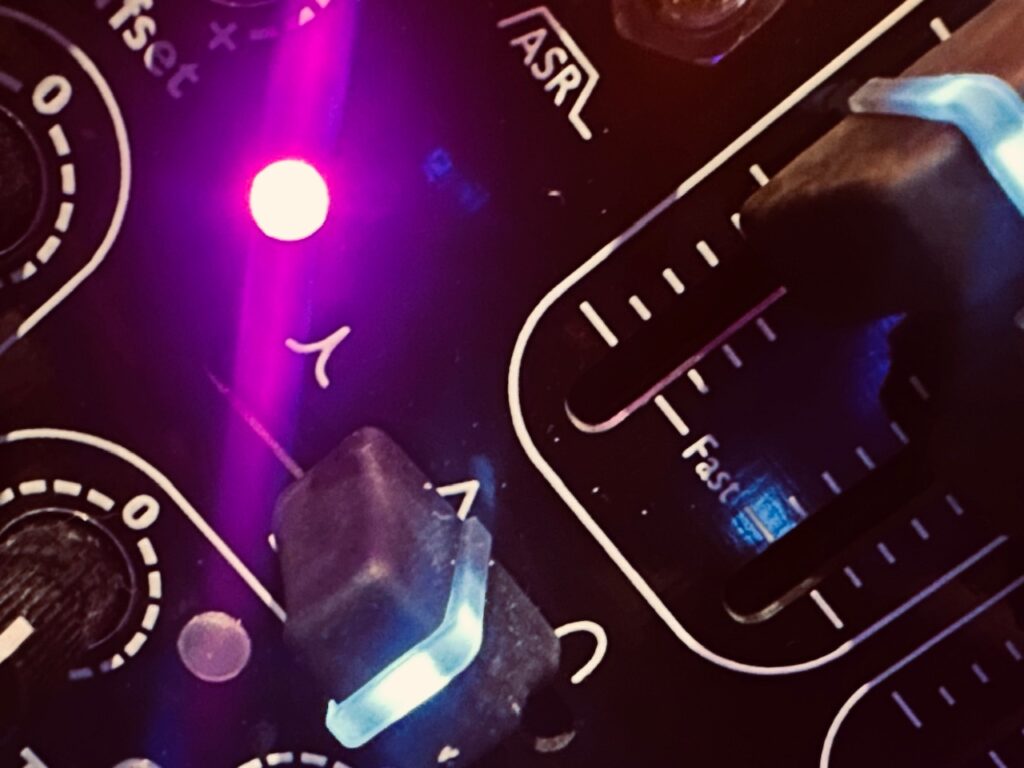
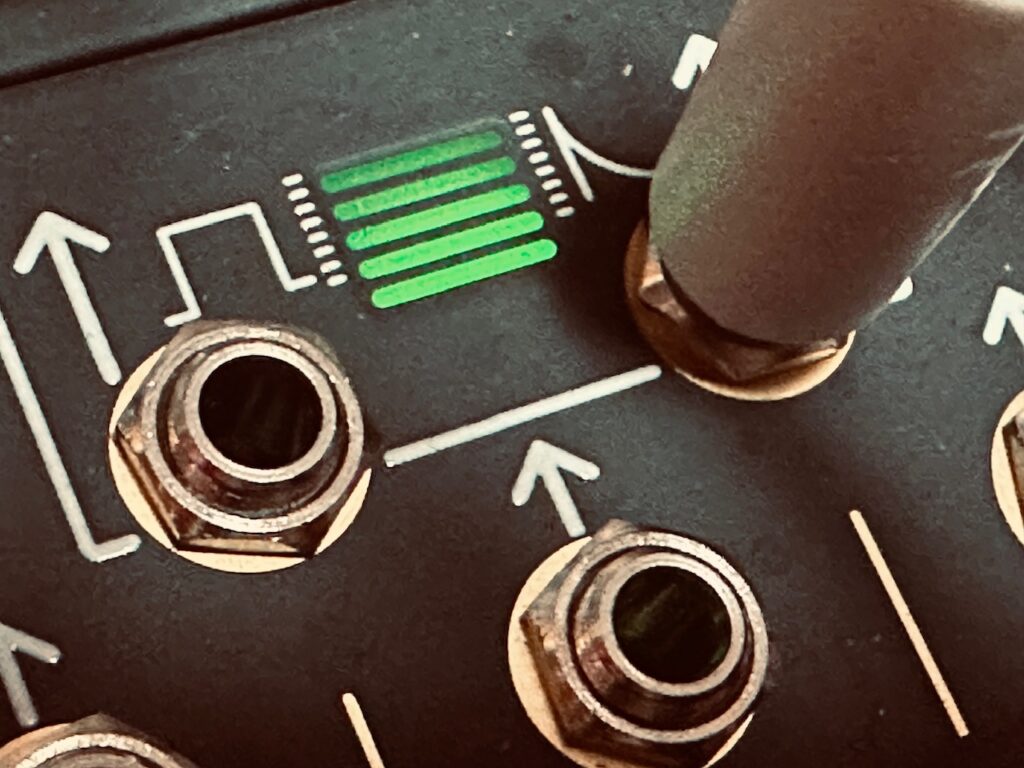
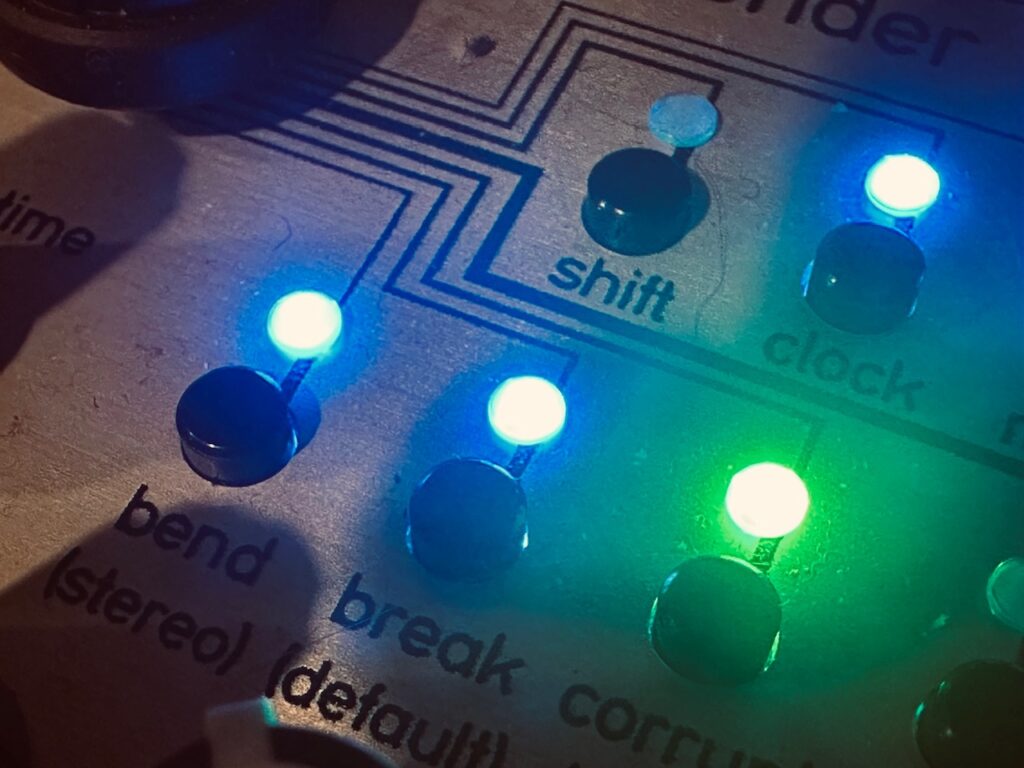

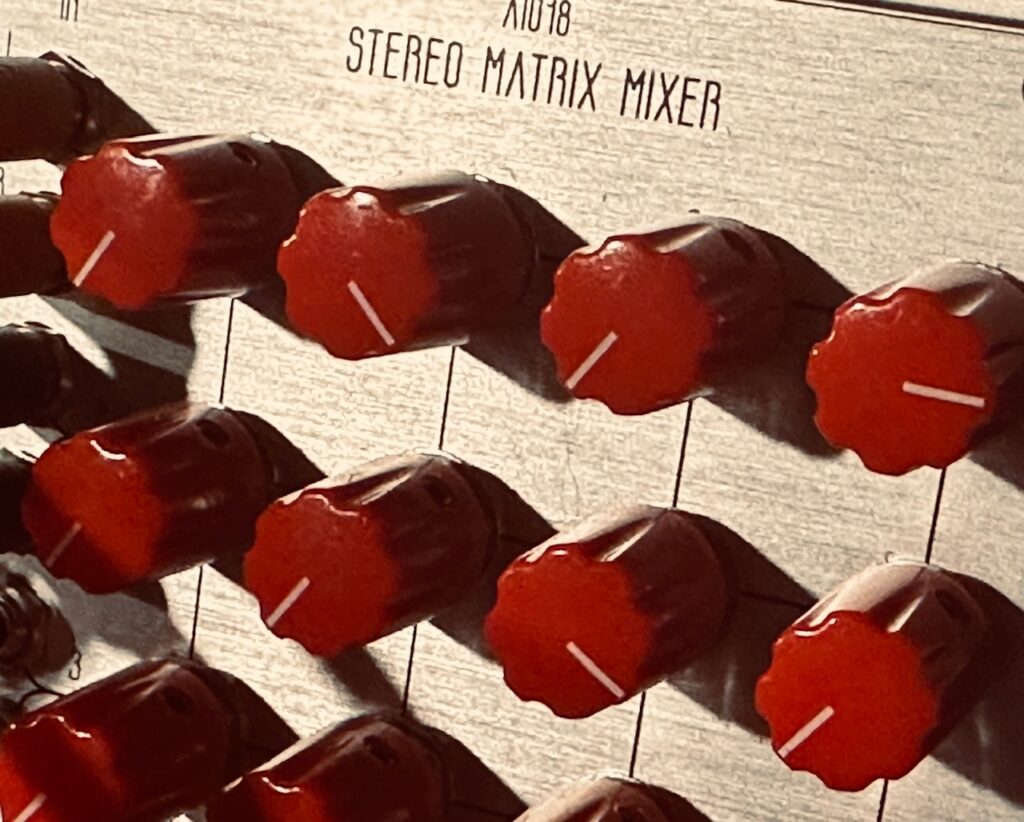




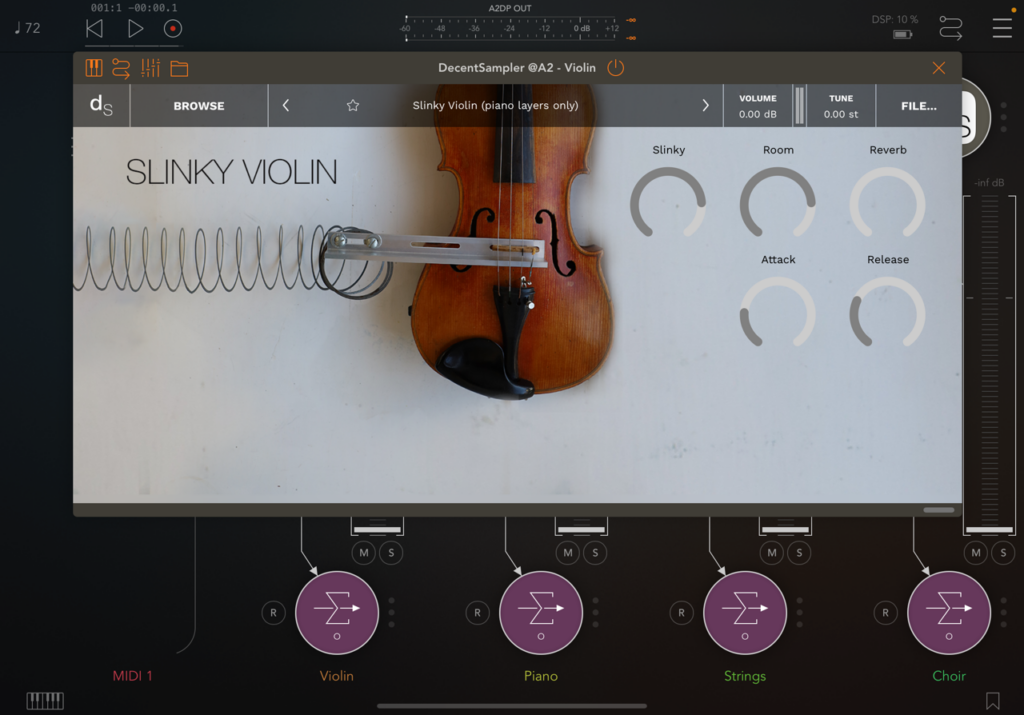
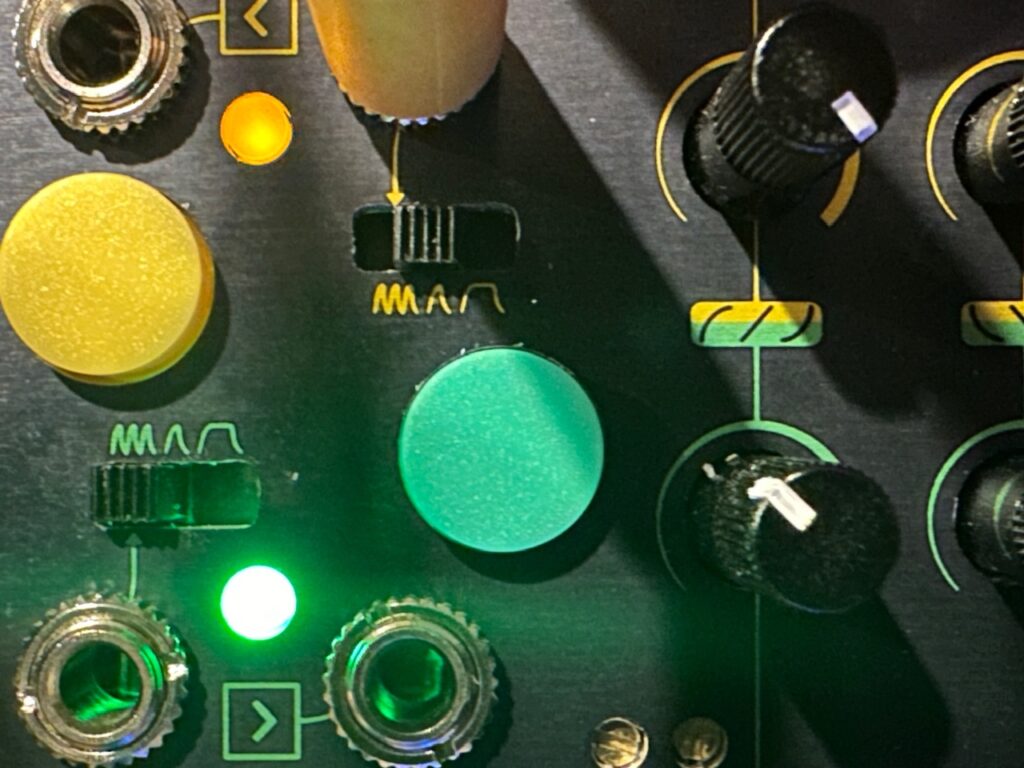

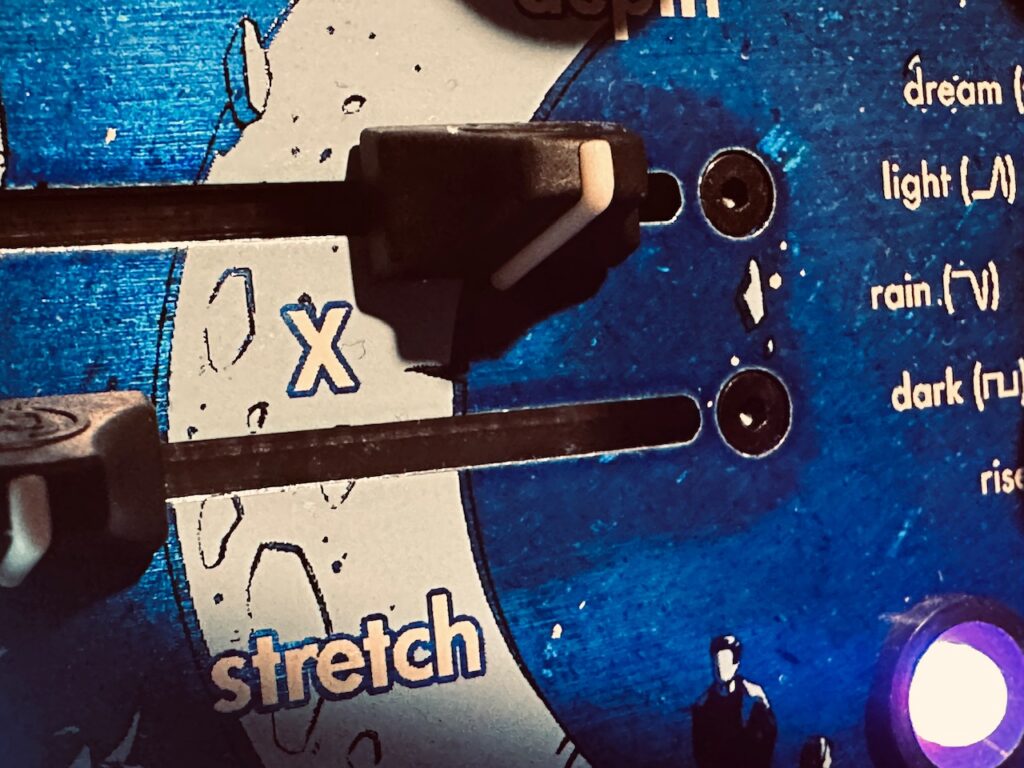
Overall Jamuary was a blast. The challenge of creating a new patch everyday got my creative juices flowing, and I’m still in a very creative mode as I write this two patches post Jamuary’s conclusion. The sense of accomplishment has helped foster more confidence in my skills as a synthesist, and has only made me want to do more. I have a very positive sense of direction and drive towards more creation. That said, I’m not sure if I’ll fully participate next year or not. It’s likely to depend on my personal circumstances next year. Only time will tell.
To close this already long patch, I’ll leave you with a playlist of some of the highest of lights from this Jamuary.
- I ultimately played trumpet into college and was trained as an orchestral musician for a time. ↩︎

